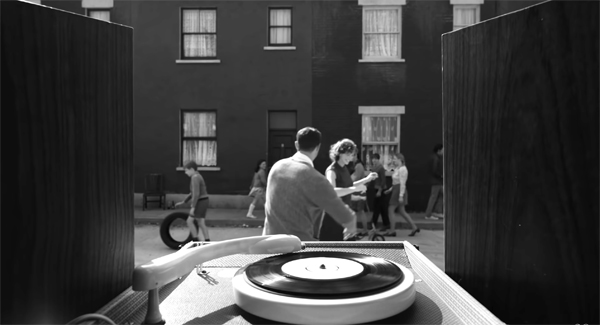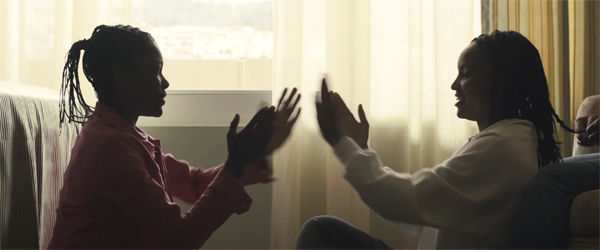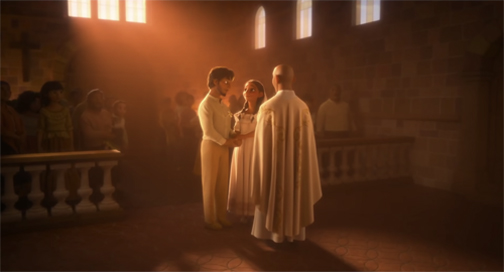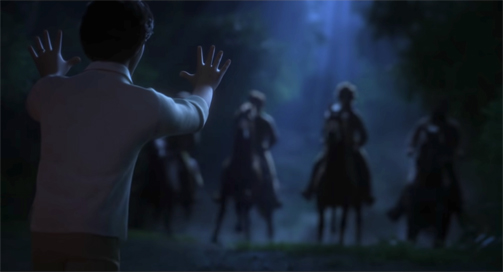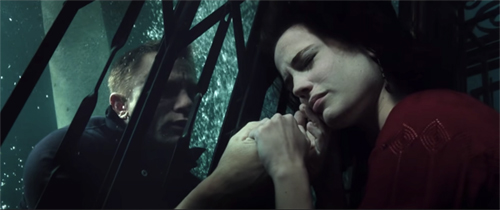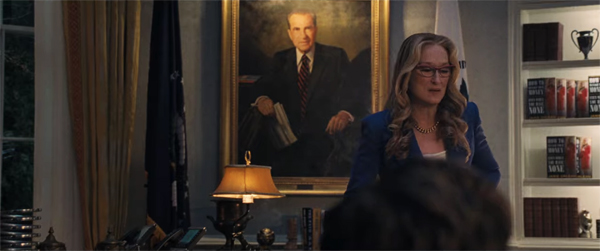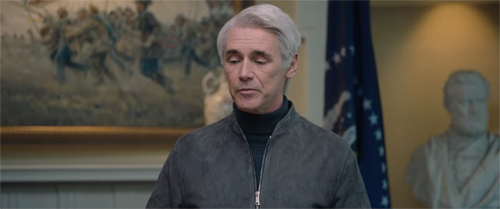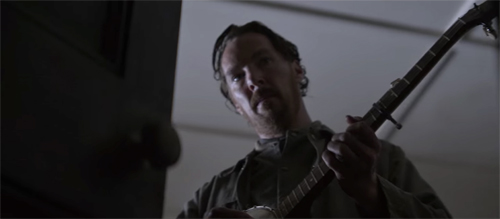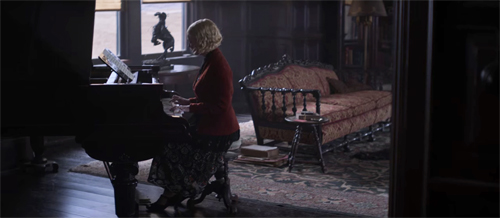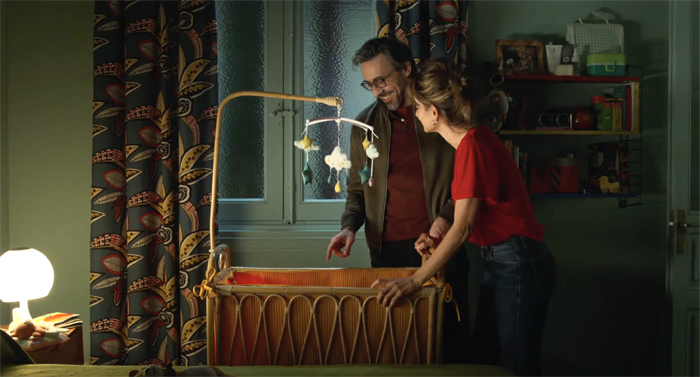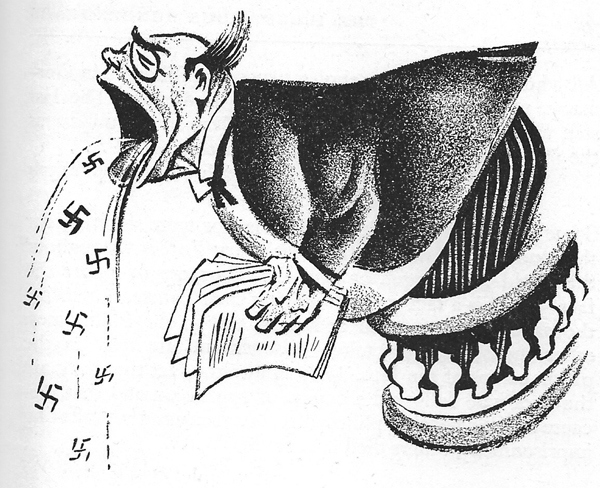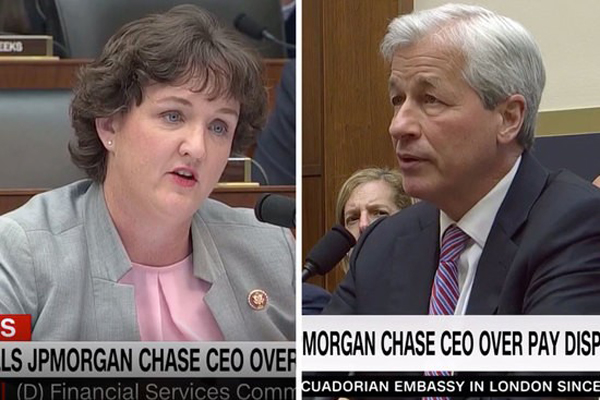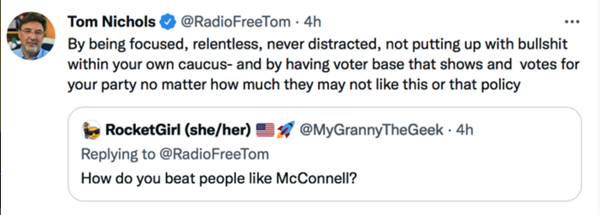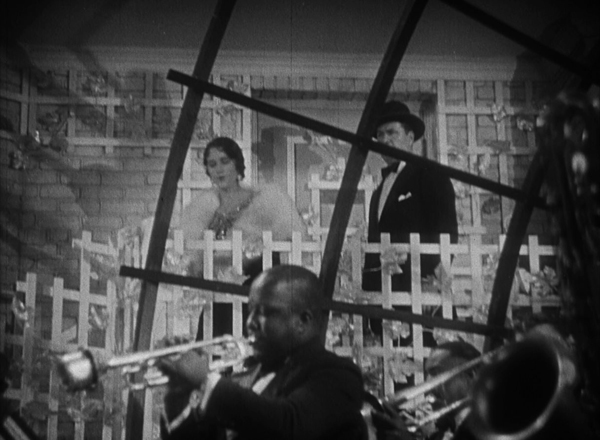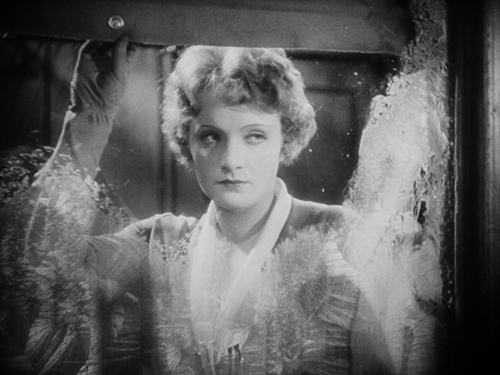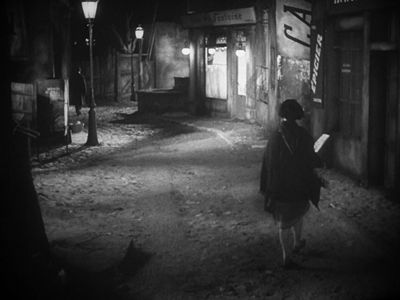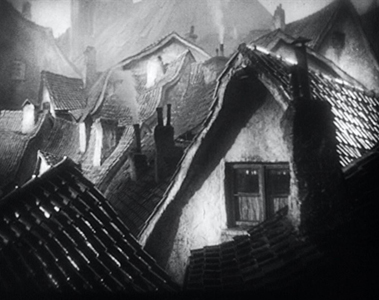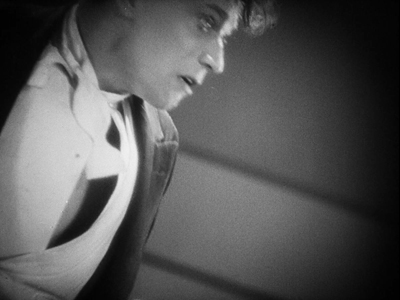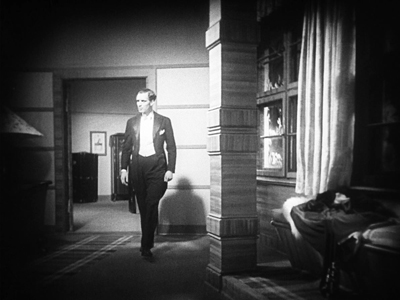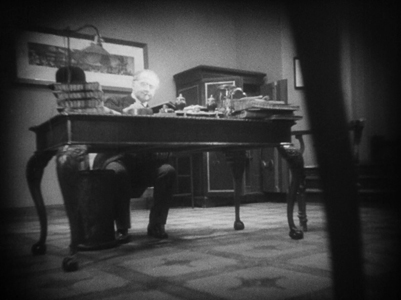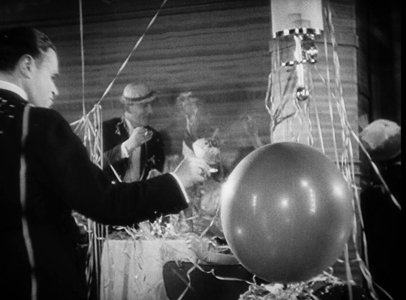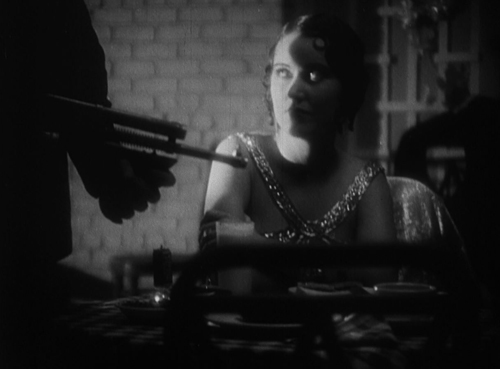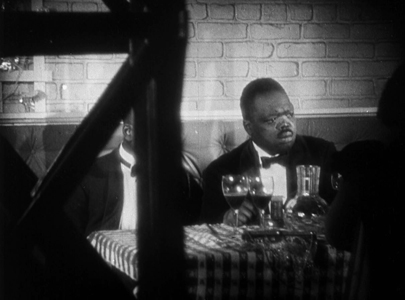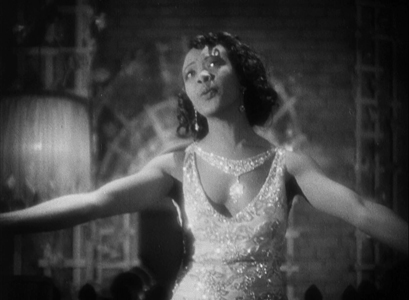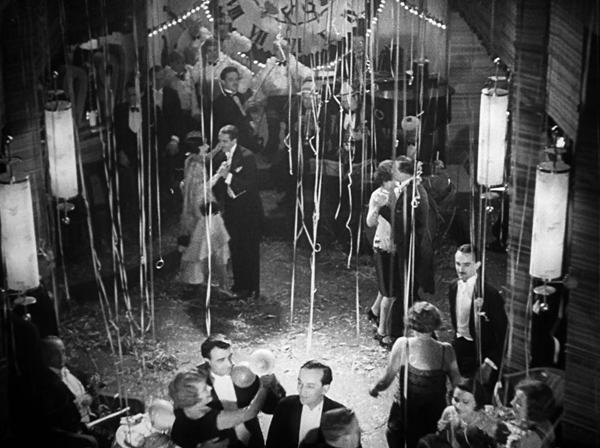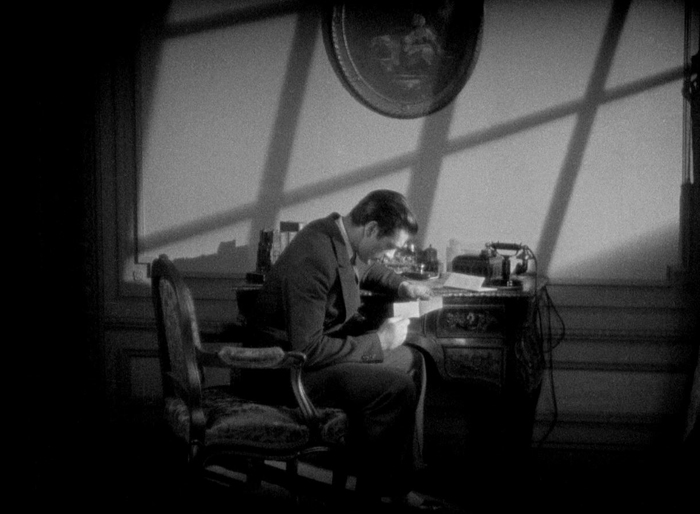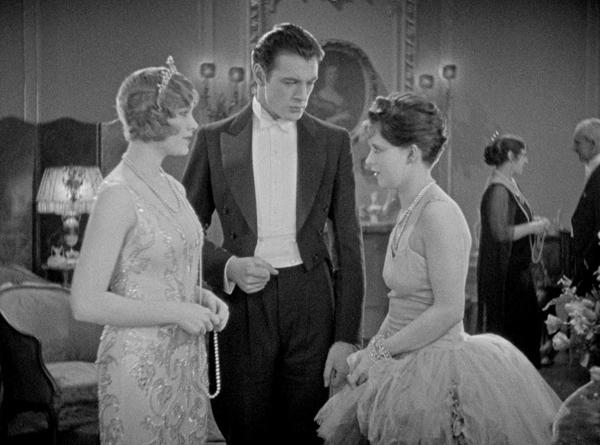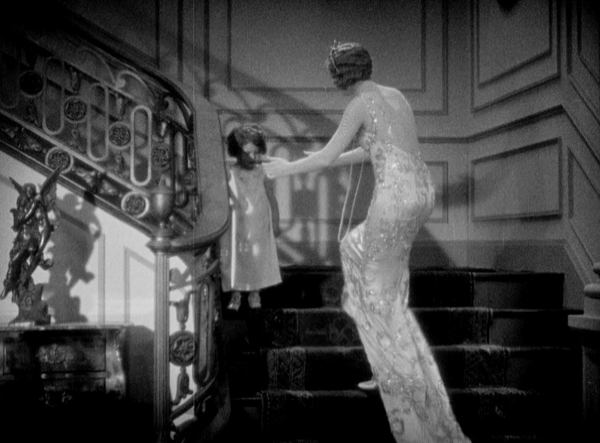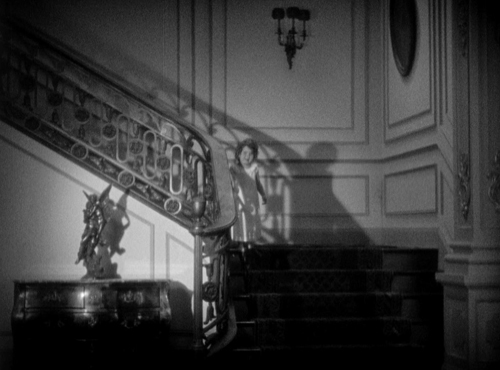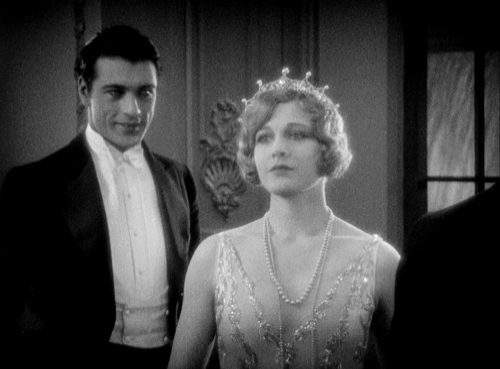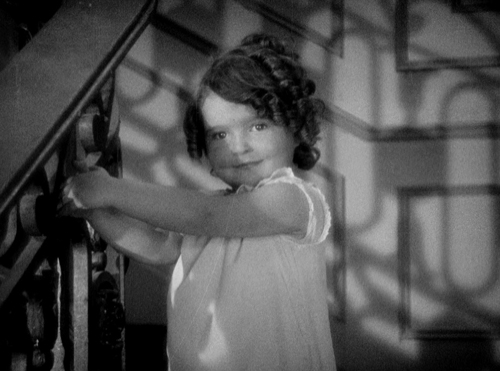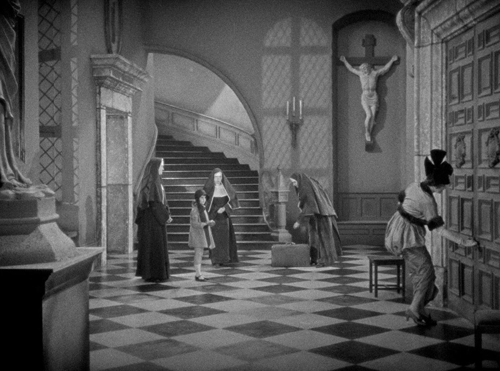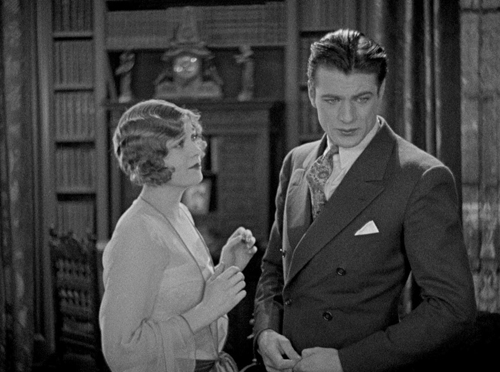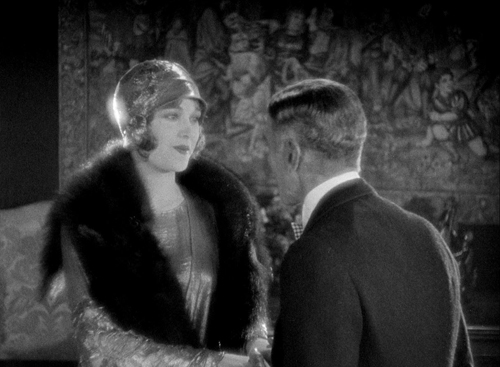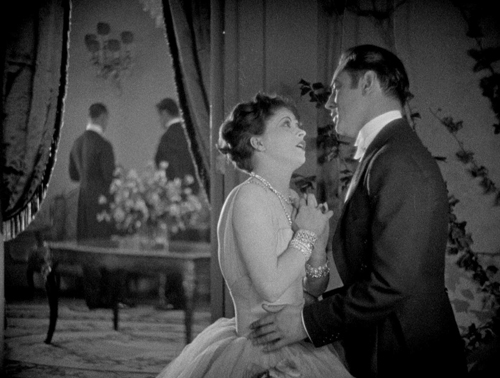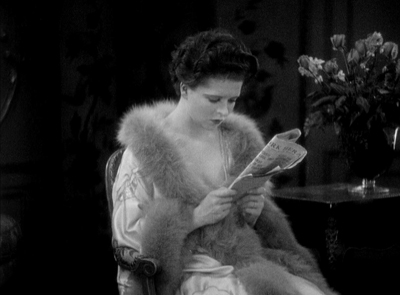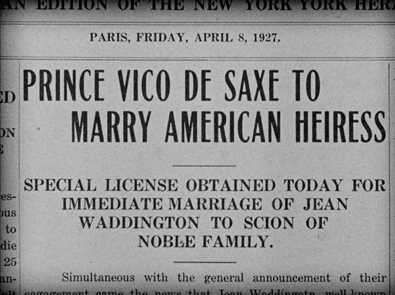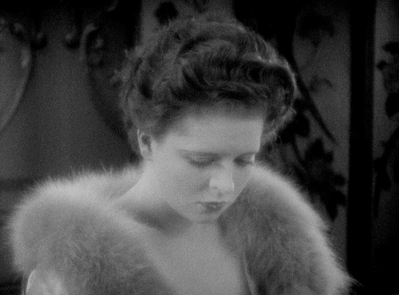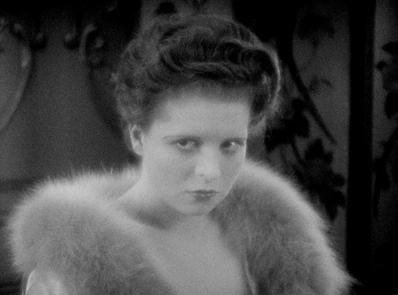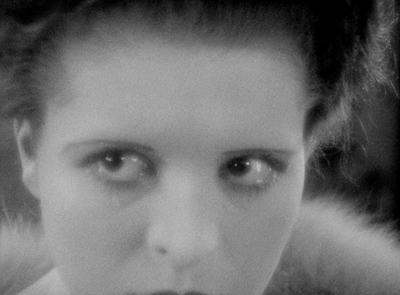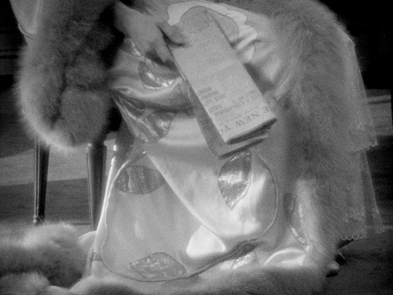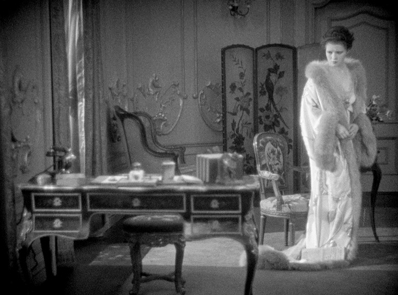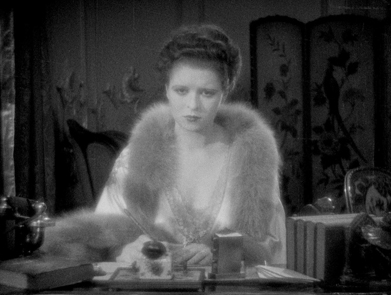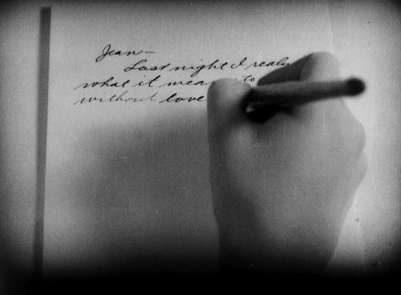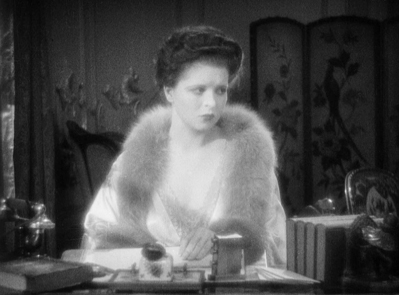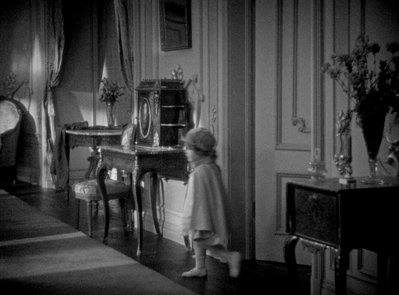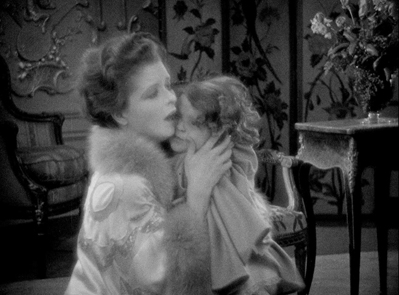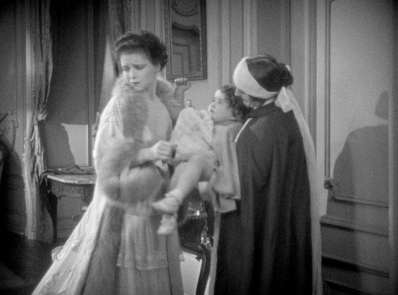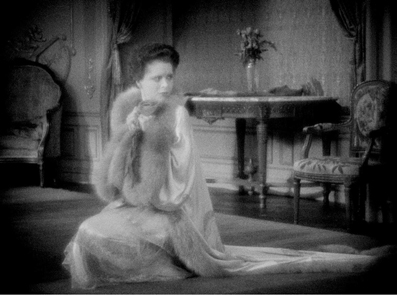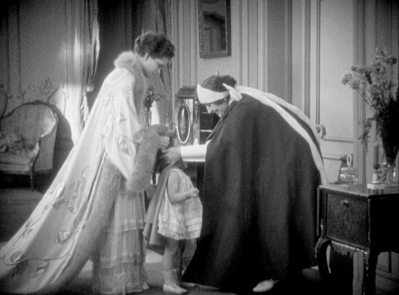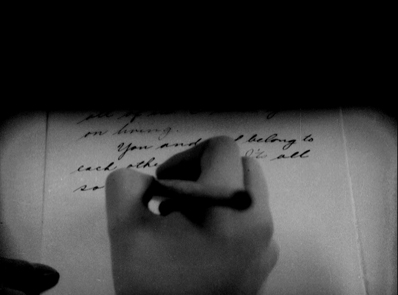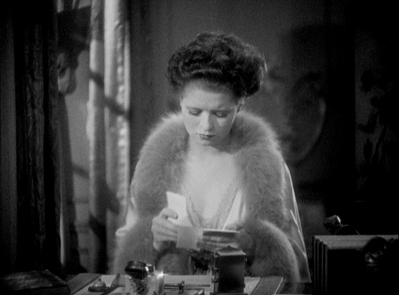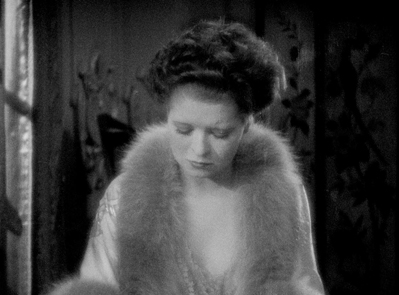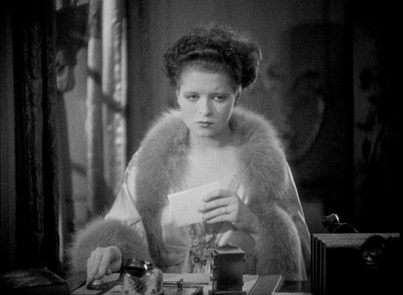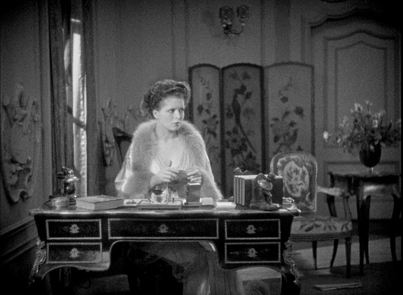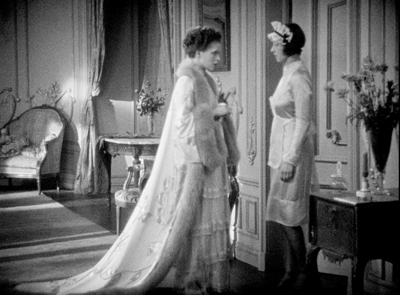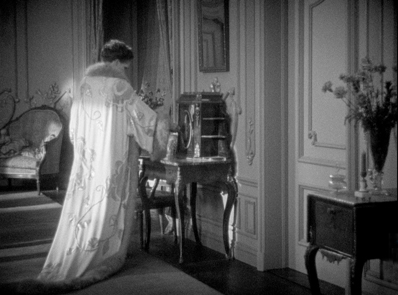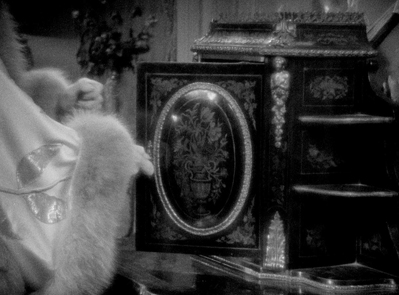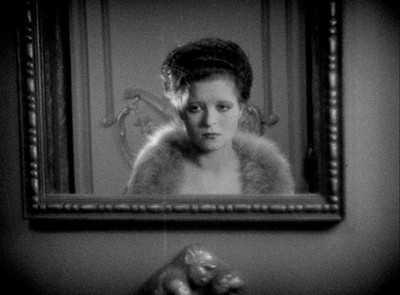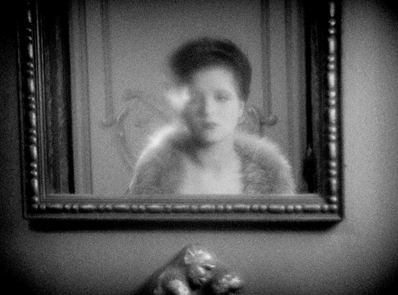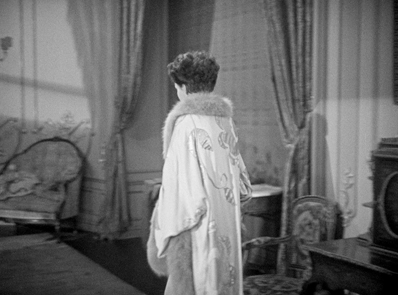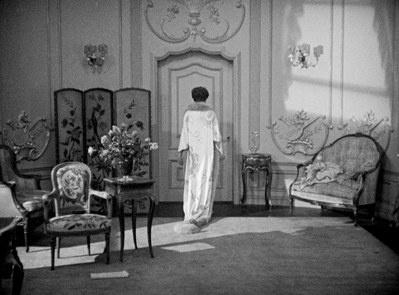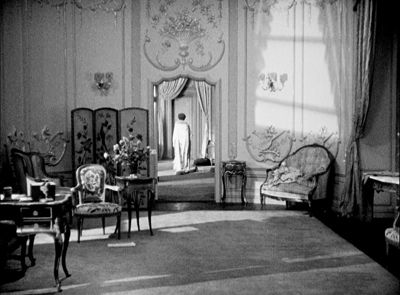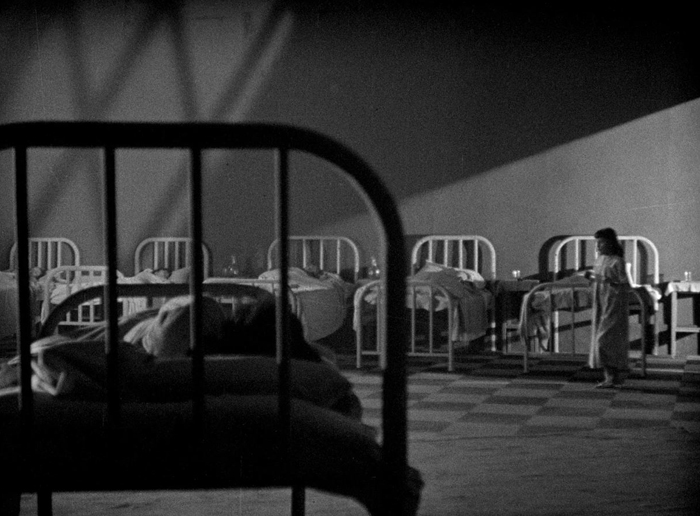Archive for the 'Hollywood: Artistic traditions' Category
Oscar’s siren song: The revenge
King Richard
The Oscars are upon us again. The Academy of Motion Picture Arts and Sciences may have decided that “Music (Original Score)” is one of the categories not important enough to show live along with the rest of the awarding of the golden statuettes. We, of course, think this is absurd. (Will the Oscar ceremony gain a single extra TV viewer through this tactic?)
We welcome back our friend and colleague Jeff Smith to continue his annual comments and predictions concerning the nominees in both musical categories: song and original score. This year he has, if anything, outdone himself in providing insights into the historical contexts and the formal qualities of the ten nominees.
‘Tis the season to pass out little gold men to people in gowns and tuxedos. This year’s Oscar ceremony is scheduled to take place on Sunday night, March 27th. And this is about the time when I offer my annual assessment of the nominees in the music categories.
The title I’ve given this blog post might appear to represent a failure of imagination. After posting the first of these surveys, I opted for a sequelitis motif by using Roman numerals and corny words like “Return.” Yet this year’s sequel title seems all too apt. The producers of the Academy Awards have been winnowing away the amount of airtime given to the music awards in the past two years. They no longer present all five of the Best Original Song nominees as part of the broadcast. This year the award for Original Score will be prerecorded before the broadcast and the winner announced in between other, presumably more important awards.
If the Academy Awards doesn’t seem to care about these categories, then why should I? Well, because as a scholar and educator, this is what I do. Consider this blog post the petty revenge of someone who believes these categories still matter, even if the organization sponsoring the awards doesn’t seem to think so.
In the case of the award for Best Original Score, there will be some bitter irony in the fact that we’ll never see the faces of the composers on the big five-way split screen used to show nominees. But we’ll hear their scores played as walk-up music if Penelope Cruz wins for Best Actress. Or if Greig Fraser wins for Best Cinematography. Or Encanto wins for Best Animated Film. Or Jane Campion wins for Best Director. Or Adam McKay wins for Best Original Screenplay.
At the end of each award preview, I’ll make an educated guess as to who the winner of the category will be. All the usual caveats apply. These predictions are not intended for wagering purposes, I offer the usual disclosure that my predictions over the years typically yield one right and one wrong. (It’s up to you to figure out which is which.)
Lastly, a warning of some spoilers. I do my best to try to avoid giving away too much information about a film. But sometimes it is unavoidable if you want to get into the nitty gritty of the choices composers make in how they score their films.
The Susan Lucci of songwriting
Last month, Diane Warren earned her 13th Oscar nomination for Best Original Song, the most by a woman in any category without a win. This isn’t the most, though, in the music categories as composers Thomas Newman and Alex North both earned 15 nominations for Best Score without ever taking home Oscar. Last April, Warren told Billboard that she the old saw about it being “nice to be nominated” was true, but that she really would like to finally win an Oscar. Said Warren, “I’m like a sports team that has lost the World Series for decades. This is 33 years since my first nomination.” Warren’s record begs comparison with soap opera star Susan Lucci, who earned 18 Daytime Emmy nominations for her role as Erica Kane on All My Children before finally winning the award in 1999.
Warren’s current nomination is for her song, “Somehow You Do,” which is featured in Rodrigo Garcia’s drama about opioid addiction, Four Good Days. Sung by Reba McEntire, Warren’s number is a countrified version of the sort of power ballad that the tunesmith has specialized in for decades. The first verse is modestly arranged for two guitars, one an acoustic and the other pedal steel. The song gradually adds more texture as it nears the chorus, with the bass adding some bottom end and a chorus punching up McEntire’s lead vocal.
The second verse continues to build with the addition of a drum kit that firmly establishes the song’s 6/8 meter and slow tempo. The song’s bridge introduces a contrasting melody and roughens up the sweetness of McEntire’s voice with some pulsating power chords played by an electric guitar. This prepares for the requisite key change as the song shifts to the final verse and chorus. The tune reaches its emotional peak here and then gradually tapers down. A brief coda returns us to the spare sound of McEntire’s voice accompanied by an acoustic guitar.
The song is very well-crafted if a bit by the numbers. It is a testament to Warren’s mastery of her craft that she finds new ways to enliven the venerable AABA structure of classic songs and fit them to the dramatic needs of the films she works on.
Yet Warren’s chances of winning seem to be hampered by a couple of factors. If you asked yourself, “What is Four Good Days?”, you are not alone. The film garnered little attention from critics and fans, earning less than $900,000 during its theatrical release. Moreover, although McEntire is a huge star in the world of country music, that probably won’t cut much ice for voters in the Academy music branch who represent a different industry demographic.
There seems little doubt that Warren has a dedicated following within the music branch. However, although it is big enough to consistently yield nominations, it isn’t large enough to deliver the big prize. Warren likely will have to content herself with “It’s nice to be nominated.” If she starts to feel too downhearted, Warren can console herself by looking at her royalty statements for “Rhythm of the Night.” Or “I Don’t Want to Miss a Thing.” Or “How Do I Live.” (You get the idea…)
The Legends (and I don’t mean John, Chrissy, Luna, and Miles)
The next two nominees are among pop music’s biggest icons, representing more than ninety years of combined experience in the biz. A bit surprisingly, though, both artists also are first-time Oscar nominees.
First up is the man who epitomizes Northern Soul: Irish singer and songwriter Van Morrison. Morrison is nominated for “Down to Joy” from Kenneth Branagh’s Belfast. Like Branagh, Morrison was born and raised in Belfast. He also has been closely associated with the city throughout his career, receiving the monikers of “the Belfast Cowboy” and “the Belfast Lion.” The early peak of Morrison’s career also coincides with the onset in 1969 of “the Troubles” depicted in Belfast. Besides “Down to Joy,” Branagh selected eight other Morrison tracks for the film’s soundtrack, many of them lesser-known tracks like “Caledonia Swing” and “Carrickfergus.” By digging deep into Morrison’s catalog, Branagh is not only able to provide a musical biography of his childhood, but also indicates how deeply Van the Man’s music was woven into the fabric of everyday life in Belfast.
Morrison’s “Down to Joy” also shows the durability of AABA form, albeit in this case channeling the sound of his early mid-tempo rockers like “Caravan” and “Domino.” The latter recordings are among the songs that would cement Morrison’s status as a Celtic interpreter of the revue style of sixties soul music, especially the Stax sound epitomized by singers such as Solomon Burke, Wilson Pickett, Sam and Dave, and Otis Redding. Morrison based his entire career on melding those influences with more native elements of Irish folk music. For nearly sixty years, Morrison has demonstrated that the idiom of sixties soul seems almost timeless, an impression confirmed by even more modern practitioners, like Sharon Jones & the Dap Kings or Nathaniel Rateliff & the Night Sweats.
Appearing over the end credits, “Down to Joy” neatly encapsulates the overall tone of Belfast and its mix of nostalgia, melancholy, and hope. At the end of Belfast, young Buddy and his family have been displaced by “the Troubles,” forced to relocate by threats of IRA retaliation. Their journey to England is colored by the pain of family separation. Yet it also represents a horizon of new possibilities. “Down to Joy” reflects that latter sentiment with lyrics describing a new morning after a dark night, and the glory and gratitude expressed through Buddy’s child-like naivete.
So, what are the chances that Van the Man wraps his hands around a small golden dude? Not very good, if you ask me.
Don’t get me wrong! Morrison albums of the late sixties and seventies – Astral Weeks, Moondance, Tupelo Honey, Saint Dominic’s Preview – are stone cold classics. It’s Too Late to Stop Now is among the finest live albums ever recorded. Morrison’s “Brown Eyed Girl” is my wife’s very favorite song ever!
I’m a Van fan, but his public statements about the United Kingdom’s Coronavirus restrictions have probably killed his chances of winning an Oscar. If younger members of the Academy know Morrison at all, it is likely as a conspiracy crank who is now recording with equally obnoxious anti-vaxxer Eric Clapton. I just can’t see Academy voters giving Morrison a platform to air his views on social distancing and lockdowns. If they did, it would produce the kinds of news clips and headlines that the Academy would like to avoid. Just imagine the public response to an acceptance speech in which the boos from the crowd rain down on the winner. I imagine that a lot of folks in the music branch just can’t bring themselves to vote for Morrison in the current political landscape. And, even as a lifelong fan, I can’t really blame them.
The third nominee for Best Original Song is “Be Alive” by DIXSON and Beyoncé Knowles Carter. The song appears in the end credits of King Richard, the biopic about Richard Williams, the father of tennis phenoms Serena and Venus. The tone of the music and lyrics succeed in doing something the film itself struggles to do, namely give voice to the two women who end up rewriting the record books of professional tennis.
In contrast, King Richard casts Williams the elder as a Svengali figure shepherding his young prodigies into the world of big-time sports. He acts as the girls’ agent, manager, coach, and protector, shielding Serena and Venus from the sorts of predations that characterize an industry with a bad reputation for chewing up and spitting out young talent. The lyrics of “Be Alive” speak to the family’s sense of fierce independence and Williams’ own “bootstrap” mentality. This is evident in couplets like:
Couldn’t wipe this black off if I tried
That’s why I lift my head with pride
Later, Beyoncé sings the praises of sisterhood, a theme that can be heard in some of her biggest hits, such as “Single Ladies (Put a Ring on It)” or “Independent Women Part I,” the latter recorded as a member of Destiny’s Child.
With its steady marching tempo borrowed from the Doors’ “Five to One” and Beyoncé’s soaring vocals, “Be Alive” bespeaks a mood of strength and defiance. Yet, it isn’t as well placed as some of the other songs in the category and, unlike many of Beyoncé’s popular records, it also isn’t the kind of earworm that lights up record charts. “Be Alive” peaked at #40 in Billboard’s Hot 100, likely a disappointment considering how well King Richard has performed in other audience metrics.
Come Sunday, I suspect that Beyoncé will likely go home empty handed. Like Diane Warren, she’ll need to console herself with the mantra “It’s nice to be nominated” and the many other Grammys, ASCAP, Billboard, BET, MTV, and American Music Awards that line her trophy case.
The Young Bloods
The final two nominees had big years in the world of entertainment in 2021. An Oscar would put a capper on a period of creative ferment that’s the envy of most singers and songwriters. Yet, for these two performers, it just seems like another day at the office.
Lin-Manuel Miranda received his second Oscar nomination for “Dos Oruguitas,” one of several songs he wrote for the Disney animated musical Encanto. The song is performed by Columbian singer Sebastián Yatra and appears in a flashback that dramatizes Abuela Alma’s tragic backstory. As a young woman, Alma, her husband Pedro, and their triplets attempt to escape their village after war breaks out. During their journey, they are beset by armed horsemen. The refugees scatter, but Pedro is killed when he halts the charging caballeros, presumably to ask for mercy for himself and his family. A candle Alma is holding protects the rest of the group, and its magical properties transform their future home into the “Casita,” a fantastic space where its denizens are revealed to have supernatural abilities and the house has a mind of its own.
The sequence itself is reminiscent of similar moments from films made by Disney’s friendly rival, Pixar. The montage that encapsulates an entire life in a couple of minutes of screen time recalls the opening of Up (2008) which depicts the long, happy marriage of Carl and Ellie until her illness and untimely death. The song that accompanies a flashback explaining the source of a character’s trauma and grief is also seen in Toy Story 2. Cowgirl Jessie relates how she once was her owner Emily’s favorite doll, but ends up forgotten and left behind when Emily grows up. This is all set to the strains of Sarah McLachlan’s “When She Loved Me.” The montage from Encanto nicely fuses together both these narrative devices but gives them a Latin pop spin.
Like “Somehow You Do,” “Dos Oruguitas” begins quietly with a brief introduction played on an acoustic guitar. The slight syncopation of the guitar figure, though, gives it a bit of Hispanic flair. As Yatra’s voice enters, the song’s chord structure follows a chromatically descending bass line, a device that heightens the harmonic tension until it circles back to the tonic. The tune pauses briefly as Abuela confesses her guilt for forgetting what the purpose of the magic was for. Mirabel reassures her that the Madrigal family’s entire livelihood is due to the earlier sacrifices the Abuela made and the suffering she endured. When they embrace, “Dos Oruguitas” kicks back in with a slightly faster tempo and with fuller orchestration that includes strings, percussion, a chorus, and a harp. With the rift between Alma and Mirabel healed, the Madrigals band together to rebuild the “Casita.” The harmony created by the restored family bonds allows it to regain its sentient properties.
As an Oscar nominee, “Dos Oruguitas” has a lot going for it. It accompanies a very emotional scene of intergenerational reconciliation. It is a featured track on the Encanto soundtrack, which has spent the past nine weeks atop Billboard’s Top 200 album chart. And Lin-Manuel Miranda is on a roll having served as the director of Tick, Tick…Boom!, the musical biopic of Rent composer Jonathan Larson, and as the producer of In the Heights, the screen adaptation of Miranda’s own hit Broadway play.
Perhaps the only thing working against it is the fact that it’s been overshadowed by another song from Encanto. “We Don’t Talk About Bruno” is a certified pop culture sensation, spending five weeks as the #1 song on Billboard’s Hot 100, accumulating more than 300 million views on Vevo, and featured in 21 different languages on Instagram. Did Disney submit the wrong song for nomination? Maybe, but “Dos Oruguitas” still might been benefit from the reflected glory of its more popular sibling. This and the fact that Encanto is up for some other major awards have kept Miranda among the frontrunners.
The last nominee is the title song from the most recent entry in the venerable James Bond series, No Time to Die. The tune is performed by Billie Eilish and written by Eilish and her frequent songwriting partner, brother Finneas. Like Miranda, 2021 has been a good year for Eilish. Her new album Happier Than Ever topped the charts in 26 countries across the globe, including the US. It also earned two Grammy awards and landed on several year-end “best of” lists. In addition to her music, Eilish also appeared in two films: a concert film featuring songs from Happier Than Ever and a “behind the scenes” documentary distributed by Neon and Apple TV+ called Billie Eilish: The World’s a Little Blurry.
In some respects, Eilish seems like an exemplary contributor to the amazing catalog of songs written for the Bond canon. She is an immensely popular artist. She is also someone who could update the template for the series by adding emo, dream-pop, and electro-pop touches to the usual Bond formula.
In other respects, though, Eilish represents something of a departure from previous Bond songstresses. When one thinks of iconic Bond songs, one thinks of tunes like “Goldfinger,” “Diamonds Are Forever,” “Licence to Kill,” “Goldeneye,” “The World is Not Enough,” “Skyfall,” and “Another Way to Die.” What do these songs all have in common? They are all sung by women with big voices, belters like Gladys Knight, Tina Turner, Adele, Alicia Keys, and the two Shirleys: Bassey and Manson. In contrast, Eilish is known for a much softer style of singing: hushed, sensitive, and intimate. That seems fitting for a performer whose best-known album was inspired by lucid dreaming and night terrors. Yet it seems less well-suited for an almost mythic film character defined by his swagger, toughness, and even a streak of cruelty.
Yet, if there was moment to rethink the traits of the typical Bond song, this was certainly it. In retrospect, the selection of Eilish was a masterstroke by the Bond brain trust led by Barbara Broccoli, the current head of Eon Productions. As the last film to feature Daniel Craig as James Bond, No Time to Die not only caps off his five-film arc, but also serves as a reflexive meditation on the series as a whole. At one level, the explicit meaning of No Time to Die is both simple and banal: everyone dies. Yet, by making references to several earlier films in the series, the accumulated weight of intertextual resonances invests the many deaths that occur in No Time to Die with an unusual sense of depth and gravity.
No Time to Die begins with a scene where Bond visits the tomb of Vesper Lynd, the fellow agent featured in Casino Royale who helps Bond defeat the evil Le Chiffre. Lynd and Bond fall in love, but she proves to be a double agent working for a rival operative. At film’s end, Lynd sacrifices herself when she drowns in a locked elevator car that has submerged.
M then reveals that she was an unwilling accomplice, a victim of blackmail after her previous boyfriend was abducted and threatened.
Bond’s pilgrimage to Lynd’s grave presages several additional deaths in the film. Bond’s best friend, CIA Agent Felix Leiter, and his mortal enemy, Ernst Stavro Blofeld, are killed in separate incidents. Even Bond himself perishes in the climax of No Time to Die. He sacrifices himself to foil a scheme by Lyutsifer Safin to unleash a bioweapon upon the world that is transmitted by touch and kills its victims based upon their DNA. After a missile strike is launched against Safin’s compound, Bond stays behind to assure that the silo’s blast-proof doors stay open. Bond’s gesture that not only saves the world but allows his current paramour, Madeleine Swann, and the young daughter he never knew he had, to safely escape the island.
Given how much of No Time to Die is pervaded by a sense of grief and sorrow, the decision to include a title song reflective of the film’s solemnity and melancholy makes perfect sense. Like some of the other nominees, Eilish’s tune begins slowly and quietly with a piano plunking out a repeated four note motif accompanied by strings and low brass. Eilish intones the first lyric, “I should have known” in a sung whisper. The serpentine melody unwinds through the verse and chorus, eventually taking Eilish into the upper range of her soprano on the lines:
Fool me once, fool me twice
Are you death or paradise?
You’ll never see me cry
There’s just no time to die
Just as the chorus ends, a thunderous bass chord enters, and the opening four note motif returns. The song continues to build, and more instruments are added as the song reaches its second chorus. Our four-note motif returns once more, but this time played in full orchestral splendor by the strings and the full brass section. The musical bombast ultimately fulfills the remit of other classic Bond songs. Eilish even follows suit by loudly belting out the chorus, revealing a power and huskiness to her voice that most of her fans probably hadn’t heard before.
“No Time to Die” finishes with a coda that returns to the sparse arrangement of the tune heard at the start. Eilish also goes back to the shivery murmur that is her stock in trade for one last iteration of the chorus’ last two lines.
No Time to Die larger themes of love, death, grief, and martyrdom presented a special challenge. Billie and Finneas rise to it beautifully. Moreover, the Eilishes also cleverly incorporate musical elements that evoke the harmonies and tonalities of John Barry’s best-known scores in the series. The four-note motif that serves as a spine for the song sounds like it could have easily been drawn from From Russia with Love, Goldfinger, or Thunderball. They also conclude the song with an electric guitar strumming an EmMaj9 chord, the so-called spy chord that Vic Flick plays at the end of the famous James Bond theme that started it all.
Does this mean that “No Time to Die” is the odds-on favorite to win? Perhaps, but it also seems to be overshadowed by another song, much as “Dos Oruguitas” was. In this case, the song was written for a completely different Bond film and mostly functions as an Easter Egg for die-hard fans of the series. It is “We Have All the Time in the World,” which was written by John Barry and Hal David and performed by Louis Armstrong over the end credits of On Her Majesty’s Secret Service (1968). Notably, the song appears just after Bond’s new bride, Tracy, has been killed in a drive-by shooting by Blofeld and his assistant, Irma Bunt. It is yet another evocation of death in No Time to Die with Tracy, like Vesper Lynd, implicitly included in the film’s mounting body count. Notably Hans Zimmer’s score for No Time to Die incorporates the melody to “We Have All the Time in the World” in three of the cues he wrote for the film. Indeed, long-time fans like me might well recognize the older Bond song in Zimmer’s score much more readily than the new one specifically written for it.
Prediction for Best Original Song
An Oscar would confer EGOT status on Lin-Manuel Miranda, a distinction held by just a handful of other entertainment luminaries. In fact, because Miranda also won a Pulitzer Prize for Hamilton and a MacArthur Genius Award, an Oscar would place him in entirely unique category. Say hello to the MacPEGOT.
Yet, although an award for “Dos Oruguitas” would make history, recent Oscar ceremonies have favored Bond songs. Adele won for “Skyfall” in 2013. Sam Smith repeated the feat with “Writing’s on the Wall” in 2016. “No Time to Die” also has already won a Grammy, a Golden Globe, and more than a dozen awards from prominent critics’ societies. Eilish is also a newly minted pop star, whose personal story is the kind of underdog narrative that Oscar voters seem to like.
If you are looking for a dark horse in the field, you might consider “Be Alive.” (Although when would you ever consider Beyoncé a dark horse for anything?) But I am sticking with the favorite. On Sunday, I expect Eilish to win. It is the clubhouse leader in terms of the betting markets and also my personal favorite among the field.
An ode to the new cleffer
One of the first things you might notice about this year’s slate of nominees for Best Original Score is the relative absence of the “usual suspects” in the music branch, such as Thomas Newman, Alexandre Desplat, or John Williams. Between them, these three composers have received a total of 78 nominations. Admittedly, only one of the five nominees this year – Germaine Franco – is a first timer. However, aside from Hans Zimmer’s twelve previous nominations, none of the other composers has received more than four.
Franco’s nomination is significant for other reasons. In February, she became the sixth woman nominated for Best Original Score and the first Latina. The field has a decided international flair with nominees from Britain, Germany, and Spain joining two Americans.
Of the five nominees, Alberto Iglesias’ music for Parallel Mothers (above and at bottom) comes closest to the style of a classical score. Yet it also presents a slight departure from those norms in its use of a chamber orchestra with most cues arranged for strings, piano, and the occasional wind instrument. Some feature the strident bowing style associated with Bernard Herrmann’s famous score for Psycho (1960). Others create lush combinations of strings and solo piano, an approach reminiscent of Frank Skinner’s music for older Universal melodramas like All That Heaven Allows (1956).
If that sounds a bit odd, it shouldn’t. Alfred Hitchcock and Douglas Sirk have been prominent influences on Pedro Almodovar’s cinema over the years. Parallel Mothers is the thirteenth film that Iglesias has scored for the great Spanish auteur. The composer admits that Almodovar’s films are always rooted in melodrama. But Parallel Mothers also had the generic trappings of a thriller, and his music strived to infuse scenes of psychological intimacy such that they crackled “with energy and light.” Iglesias also sought to accentuate the protagonists’ intertwined lives at a macro-level, using parallel musical structures to underscore how Ana enters and exits Janis’ life at several points in the film.
Iglesias is a four-time nominee and his score for Parallel Mothers is among his best. But I fear this is not his year. Parallel Mothers is among the biggest longshots in the Oscar betting markets not only for Iglesias in the Best Score category but also for Penelope Cruz as Best Actress. Moreover, the fact that Spain snubbed Parallel Mothers when submitting its nominee for Best International Feature Film also doesn’t bode well. Iglesias is once again a very deserving nominee whose work is likely to be overlooked in a highly competitive field.
Stretching the classical style: Incorporating novel idioms
Nicholas Britell earned his third Oscar nomination for Don’t Look Up, Adam McKay’s acrid satire of contemporary politics and media. The film’s dark humor and its apocalyptic conclusion undoubtedly posed a conceptual challenge for Britell. How do you preserve the comedic qualities of the story while still respecting the existential crisis that hints at larger issues around climate change, COVID, and the increasing distrust of science and medicine? As Britell acknowledges, he was “unprepared for the wild ride” that viewers experience over the course of the film. Britell’s solution? A hyperbolic paean to science, a smattering of wacky electronic sounds, some rollicking big band jazz, and garage-band style Farfisa organ.
In an interview with The Hollywood Reporter, Britell notes that two cues were especially important in articulating the overall concept for the score. Even before production had wrapped, Britell created a demo cue entitled “Overture to Logic and Knowledge” that McKay played on set to enable the cast to get in the right frame of mind.
The piece unfolds as a canon performed on a piano that’s been recorded with heavy reverb. After the statement of the initial theme, Britell interweaves additional voices in contrapuntal harmony, approximating the sort of mathematical precision one associates with Bach fugues. Afterward, Britell then tried to suss out what the opposite of that compositional style might be, eventually landing on big band jazz. The idiom is evident in the film’s main title, which features walking bass, a simple brass and bass saxophone riff, and a soaring trumpet obligato. Another cue – “It’s a Strange Glorious World” – reprises that big band style, yet further estranges the viewer from the serious global crisis dramatized in Don’t Look Up with the use of banjo and toy piano for instrumental color.
Britell saves his most savage musical satire for a theme written for Peter Isherwell, the billionaire tech genius played by Mark Rylance.
The composer arranges the theme for celestas, toy pianos, Farfisa organ, and bass synthesizers. These instrumental colors suggest Isherwell’s childlike faith that new technology can solve all of humankind’s biggest problems. Of course, Isherwell exudes this relentless optimism to mask his real intentions. Isherwell proposes a foolhardy mission to try and capture the streaking comet rather than deflecting or destroying it. He does so to feed his corporate greed as the comet possesses rare minerals that Isherwell hopes to harvest for use in his production of microchips.
Britell’s score displays incredible musical sophistication even as it is asked to underscore scenes that occasionally seem silly or in which the satire seems all too crude. That being said, I have some doubts that it will win for Best Original Score. This is not to gainsay Britell’s extraordinary ingenuity in devising his music. Rather, it is just the brute reality that other films have better odds in what seems to be a close race.
Germaine Franco’s music for Encanto also pushes the bounds of the classical score. In this case, though, it does so by incorporating various styles of Latin pop music rather than using big band jazz. To be sure, there was a strain of this type of composition in earlier eras, Think, for example, of the music written by Henry Mancini, Nelson Riddle, and Quincy Jones for films of the 1960s. That music, though, reflected the predominant Latin pop styles of the period, which included congas, rhumbas, cha-chas, sambas, and bossa novas.
In contrast, Franco drew upon a different repertoire of Latin rhythms to fashion her score for Encanto, including some folk music styles specific to the film’s Colombian setting. These not only include more familiar idioms like salsa, but also more modern developments like reggaeton. The latter is a style that originated in Panama in the 1990s and mixes hip-hop beats with Jamaican riddims. It rapidly spread through Spanish-speaking countries in the Caribbean.
In Encanto, reggaeton can be heard in Luisa Madrigal’s big number, “Surface Pressure.” The song, of course, was written by Lin-Manuel Miranda. Franco then incorporated the style into certain cues to ensure a strong sense of unity between the mood and vibe of the songs and those of the score.
Other cues, however, are written in folk styles native to Colombia with Franco once again taking her cues from the rhythms of Miranda’s songs. Encanto’s opener, “The Family Madrigal,” is an up-tempo vallenato song played in standard 2/4 meter. It features marimba, three-button accordion, and guachara, a Colombian percussion instrument played by rubbing a fork over a wooden, ribbed stick. Mirabel’s “I want” song, “Waiting on a Miracle,” uses bambuco rhythms. It unfolds in a fast triple meter characteristic of the idiom. As the only song featuring this rhythm, Miranda used it to further underline how Mirabel feels separated from her family due to her lack of a special gift for magic.
Perhaps Franco’s most important gesture, though, was using cumbia rhythms to underscore Mirabel’s movement. Cumbia is popular style throughout South America but has its origins among enslaved African populations on the coasts of Colombia and different Caribbean nations. It uses a clave rhythm common in Afro-Cuban music. As the style spread throughout Colombia in the early 1900s, musicians incorporated indigenous drums and wind instruments, including tambora, llamador, and gaitas. As Franco has noted in interviews, she uses the cumbia to accompany Mirabel’s first entrance into the “Casita.” From that point on, according to Franco, “The rhythm of the cumbia becomes the forward motion of her trying to find a solution to the problem.”
I suspect Franco’s fellow composers in the music branch are as impressed as I am by her attention to details of rhythm and orchestration. To get the precise tone color needed for some of these Latin pop and folk styles, Franco had a special marimba native to the Choco rainforest region of Colombia disassembled and shipped to her in parts. After it was put back together, Franco played the marimba herself, two mallets in each hand.
Encanto isn’t the favorite to take home the prize for Original Score. But if you’re looking for a potential surprise on Sunday night, Franco seems to be in the best position to pull an upset.
Rock of the Westies
Many pop music fans know Jonny Greenwood from his work as a songwriter and lead guitarist in the British rock band, Radiohead. Greenwood, though, has also established a considerable reputation as a film composer. He is perhaps best known for his work with director Paul Thomas Anderson, who has collaborated with Greenwood on his past five projects. Beginning with There Will Be Blood (2007), Greenwood went on to score The Master (2012), Inherent Vice (2014), Phantom Thread (2018), and Licorice Pizza (2021).
In February, Greenwood earned his second Oscar nomination for Jane Campion’s The Power of the Dog. Much like the rest of the film, Greenwood’s score works against many of the conventions of the classic Hollywood Western. Many studio-era oaters developed their scores around orchestrated versions of tunes in the cowboy songbook or around Coplandesque rhythms and harmonies. Both these approaches strived to evoke the majesty of the films’ visuals, which often featured mountain vistas, endless prairies, and sunlit horizons.
Instead of looking to the “sweeping strings” style used in older Westerns, Greenwood was inspired by the atonal brass music that was used in old Star Trek episodes to underscore the exploration of unknown planets. When Peter ventures into the mountains and discovers a dead cow, Greenwood accompanies these scenes with a dissonant French horn duet to highlight the strange and forbidding quality this has on the impressionable teenager.
Similarly, instead of a big string sound, Greenwood opted for smaller ensembles, occasionally writing things for six cellos or four violas. Greenwood also plucked strings of a cello as a correlate for Phil’s onscreen banjo playing. Here again, the goal was to create a tone color that seemed just slightly off, emphasizing microtonal inflections to create a sound that was somber yet sinister.
Phil’s banjo playing also furnishes one of the most memorable scenes in The Power of the Dog. Peter’s mother, Rose, initially seems ill at ease after coming to live with George and Phil on the brothers’ ranch. At one point, she seats herself at the piano and proceeds to struggle through a piano reduction of Johann Strauss Sr.’s “Radetzky March.” Campion then cuts to Phil sitting in his bedroom offscreen. Phil then picks up the melody of the Strauss piece on his banjo, playing it almost effortlessly and improvising his own coda. In a test of wills, Phil’s virtuosity humiliates Rose, who increasingly turns to alcohol to soothe her emotional wounds.
Because of this scene, Greenwood used a detuned mechanical piano as a musical timbre associated with Rose.
To produce this effect, Greenwood used computer software to create the sound of a piano roll for his pianola. Then, as the music was played back, Greenwood used a tuning wrench to slightly alter the pitches to create a sound akin to the honkytonk pianos scene in the saloons of older Westerns. For Greenwood, the sound proved perfect for Rose’s character arc. As he states in an interview for Variety, “Not only is her story wrapped up in the instrument, but it was also a good texture for her gradual mental unraveling. I recorded hours of this stuff – poor Jane (Campion) had to hear quite a lot of it.”
Greenwood’s modernist take on the typical Western score makes him one of the top contenders in this year’s Oscars. Of course, it doesn’t hurt that Greenwood wrote music for two other nominated films: Licorice Pizza and Pablo Larraín’s Princess Diana biopic, Spencer. The betting markets have Greenwood as a longshot. However, since The Power of the Dog leads the field with a dozen nominations in all, Greenwood could prevail in the event of a Dog sweep.
Today’s sounds for tomorrow’s people
The last nominee for Original Score is the current favorite. Hans Zimmer earned his thirteenth Oscar nomination for Dune, Denis Villeneuve’s big budget adaptation of Frank Herbert’s classic science-fiction novel. As Zimmer notes in a New York Times profile, he self-consciously rejected the musical style associated with the Star Wars series and its many imitators. Those scores looked to the past for inspiration, finding it in Gustav Holst, Igor Stravinsky, Erich Wolfgang Korngold, and even Benny Goodman. Instead, Zimmer set himself an almost impossible task, trying to create sounds that no one had ever heard before.
The result is a score that Darryn King calls “one of Zimmer’s most unorthodox and most provocative.” The composer reports that he spent days contriving new sounds, sometimes commissioning the construction of new instruments or using conventional instruments in extremely unusual ways to get the effect he desired. Although synthesizers keep the score rooted in Zimmer’s pop music past, he combines these with several unusual sonorities that include Irish whistles, Indian bamboo flutes, and metallic scraping noises.
Many of these instrumental choices are keyed to aspects of Dune’s intergalactic setting. The rumble of distorted electric guitars evokes the seismic shifts occurring beneath the desert sands on the planet’s surface. Zimmer even used some of the environmental details to communicate what he wanted from the musicians performing on the soundtrack. Slide guitarist David Fleming reports that Zimmer told him for one cue, “This needs to sound like sand.”
Zimmer performed similar wonders in his use of other instruments. For the scene where the House of Atreides arrives on Arrakis, Zimmer recorded thirty bagpipes playing in a Scottish church. The added reverberance raised the volume of the ensemble to ear-splitting levels of 130 decibels. The highland players needed to wear earplugs to avoiding damaging their hearing. But Zimmer got the sound he wanted, the musical equivalent of a blaring air raid siren.
Zimmer’s desire to find new sounds not only altered the usual timbres of instruments but also of the voice as well. For Dune, Zimmer engaged the services of music therapist and singer Loire Cotler. To create the qualities Zimmer was seeking, Cotler drew on several non-Western singing styles. Her syncretic method combined Jewish niggun, South Indian vocal percussion, Celtic lamentation, and Tuvan throat-singing. The end result was a hybridized style that sounded wholly unique: a war cry expressed as though it were an ancient antecedent of Esperanto. Cotler tried to find a name for the new vocal technique, ultimately settling for the person responsible; she called it the “Hans Zimmer.”
Perhaps Zimmer’s most audacious gesture involved hiring winds player Pedro Eustache to build new instruments from scratch. Eustache created a 21-foot horn, a sort of modern version of the old animal horns fashioned into shofars and zinks during the Middle Ages. He also produced a contrabass version of the duduk, which King described as a “supersize version of the ancient Armenian woodwind instrument.”
What does it all add up to? A score that hits all the right notes in transposing Herbert’s imposing epic to the big screen. Zimmer’s music is at times quietly menacing, somber and pensive at other moments, and brooding but anthemic for Dune’s big action scenes. Zimmer’s score for Dune does not depict the kind of triumphalism found in Star Wars or other space operas. Rather, it opts to capture the elements of dark mysticism and doleful psychedelia that made Herbert’s novel a literary head trip in the 1960s. To be sure, Zimmer’s music doesn’t concoct earworms to evoke the sandworms. Yet it succeeds admirably where others have failed nobly. (If you think this is easy, just watch and listen to David Lynch’s misbegotten adaptation from 1984.)
Prediction
One could easily make the case for Germaine Franco to win for Encanto. The score and the album have dominated the popular music scene ever since the film was released in late November. Yet Dune stands a good chance at claiming several other craft awards, such as those for Sound and Production Design, which bodes well for Zimmer’s chances on Sunday.
In the world of film music today, the Burgomeister of Bleeding Fingers Music casts a shadow over the field as large as any of the luminaries who preceded him like Ennio Morricone, Jerry Goldsmith, or Dimitri Tiomkin. When I contemplate the sheer number of innovations Zimmer made in the music he composed for Dune, I can’t bring myself to bet against him. I think Hans takes home the Oscar on Sunday. He’ll walk away with another hunk of metal to scrape for the Dune sequel.
Once again, I want to give a shout-out to Jon Burlingame for his excellent coverage of Hollywood and international film music for Variety. As a subscriber, I always enjoy reading his work for the venerable trade journal, not just during awards season but year-round.
The Diane Warren interview with USA Today that I referenced can be found here. Additional interviews with Deadline and Gold Derby are found here and here.
Interviews with Lin-Manuel Miranda discussing the songs he wrote for Encanto can be found here , here, and here.
Vulture published a nice piece on the process of writing the title song for No Time to Die, which can be found here.
Alberto Iglesias discusses with work with director Pedro Almodovar here .
Nicholas Britell talks about his work Don’t Look Up with Indiewire and Variety here and here . One can find several interviews with Germaine Franco about her process on creating the score for Encanto. A sample can be found here, here, here, and here. A movie score suite featuring Franco’s themes for Encanto can be found here.
Jonny Greenwood talks with Variety about his collaboration with Jane Campion here and here.
The indie-music website provides an interesting review of Greenwood’s soundtrack for The Power of the Dog here.
Finally, Darryn King’s superb overview of Hans Zimmer’s score for Dune can be found here.
Parallel Mothers
70s mixtape hit: Tom Nichols and the Deplorables
From studying the polls, I would guess that about a third of the American people at any given moment would welcome a fascist state.
Gore Vidal, 1975
DB here:
For American conservatives, Hollywood is a prime villain, coarsening the culture and spreading liberal propaganda. Yet when Reagan promised to veto tax-increase legislation, he quoted Dirty Harry’s “Make my day.” He also promoted a “Star Wars” space defense system. Now Steve Bannon models his political ethos on Twelve O’Clock High. Stephen Miller is reported to idolize the Robert de Niro character in Casino, even mimicking his dress code. When Brad Parscale wanted to scare the Democrats, he compared his Trump campaign organization to the Death Star (evidently he didn’t see the movie’s ending). Roger Ailes’ son Zach quotes Tombstone, and Sidney Powell compared her bumbling assault on 2020 election results to an attack of the Kraken. The red pill/blue pill choice from The Matrix is at the center of the ideology of QOnan (not a typo). A conspiracy “meme queen” had a cinematic epiphany about Pizzagate: “The world opened up in Technicolor for me. It was like the Matrix — everything just started to download.”
An academic might argue that right-wingers are practicing their own version of ad subversion, twisting the Hollywood product to their own ends, like a Situationist détournement. But actually, most of these associations may betray the Republican fascination with violence. Pat Buchanan’s command that his followers “Lock and load” and Sarah Palin’s evocation of “Second Amendment solutions” would plausibly lead to a mindset that results in zealous young Republicans in 2007 calling themselves “The Young Guns,” after a now-forgotten western. A famous line in The Town (2010) about going out to hurt some people found an eager GOP takeup.
One would think that the more conspiracy-minded right would fetishize the long-running cycle of Deep-State political thrillers like JFK (1991), Clear and Present Danger (1994), Air Force One (1997) and Enemy of the State(1998), up to Equalizer 2 (2018). Such films center on rogue cadres within the government aiming to undermine official policy by working with ambitious office-holders, zealous bureaucrats, free-lance killers, and terrorists or drug smugglers. This “paranoid political thriller” is one legacy of a cascade of US assassinations in the sixties, resulting in classics like Seven Days in May (1964) and The Parallax View (1974).
Perhaps these too are Golden Oldies for Y’all Queda. But one of the most ingenious appropriations I’ve encountered comes from a less fringe figure. 3 Days of the Condor (1975), another in the Deep State cycle, is invoked in an unusual way in a new book by Tom Nichols. Like other conservatives, he finds that it illuminates contemporary politics, but not because of its revelation of off-the-books intrigue.
When the hero-on-the-run Robert Redford says he’s revealed the conspiracy to the press, Cliff Robertson as the CIA man isn’t worried. The Times may not print the story, but even if it does, the public won’t care. When the next crisis comes, the people will ask only not to be discomfited. They will expect their government to solve problems they have happily ignored for years.
For Nichols, this is a parable of the decline of American civic virtue. Democracy could end because “uninformed, spoiled, irascible voters simply can’t produce coherent demands other than ‘just get it for us.’” Technocratic elites will oblige in ways that concentrate their power because “bored and dissipated citizens” see the only threats as ones to their living standards.
How did the populace become so infantilized? Our Own Worst Enemy seeks an explanation—one that I find as provocative as it is incomplete. Here’s my take. Yes, films (with spoilers) are involved.
The hippest conservative?
Tom Nichols, 10 June 2021, Sona restaurant, New York City.
For some time, the conservative movement has been in search of a leading public intellectual. William F. Buckley loomed so large for many decades that few late arrivals have matched him, or even George Will. Current contenders include William Kristol, David Frum, David Brooks, and Ross Douthat, but Tom Nichols may turn to be the most widely influential.
He’s a late arrival. Kristol has been on the scene for decades. Brooks and Frum are Nichols’ contemporaries (all born 1960-1961), but they’ve had far more exposure, not least in several books of sweeping political commentary: five from Brooks, nine from Frum. Douthat is nearly twenty years younger than these, but he has already published six books, most claiming some attention. Brooks and Douthat have a powerful platform, the Opinion wing of the New York Times, while Frum, a formidable intellectual, is a senior editor at the newly energized Atlantic. Frum as well has extensive White House experience, notably as a speechwriter for George W. Bush.
By contrast, Nichols has been a scholar specializing in Cold War geopolitics and international relations. He teaches at the U. S. Naval War College and at Harvard Extension School. Fluent in Russian, he has written monographs on military policy with a focus on Soviet and post-Soviet history and nuclear deterrence.
Graduating from high school in 1975, Nichols became a late-stage Cold Warrior. He enthusiastically voted for Reagan twice. He worked for Republican Senator John Heinz, on the recommendation of Jeane Kirkpatrick. He opposed Trump in 2016, but he stayed in the party hoping to break the fever. (Excellent invocation of Die Hard in his declaration.) He broke permanently with the GOP in 2018 when Susan Collins endorsed Brett Kavanaugh for the Supreme Court. He has become another political commentator, writing for USA Today and The Atlantic.
In his new anti-GOP phase, Nichols’ expertise has enabled him to be more prescient than his counterparts. In two 2017 pieces he pointed out problems with the chain of command devoted to launching nuclear weapons, anticipating the crisis concerning Trump and General Mark Milley. In 2020, a week before January 6, he warned that Trump was considering war with Iran after losing the election.
On other fronts, his prophetic powers failed him. In 2016, Nichols was in despair at the Clinton/Trump option; he despised Clinton, a tenable view, but worried about Trump more. His prophetic powers–always at risk among hot-take pundits–were less than accurate, though. If Trump were to win in 2016, Nichols predicted:
His white nationalist supporters, clinging to him like lice in the fur of an angry chimp, will shake their fists along with him for a time, until they too eventually slink away. By 2020, his core constituency will be a tiny sliver of what’s left of the white working class, pathetically standing at the gates of empty factories they thought Trump would re-open.
Conservatives can recover from four, or even eight, years of Hillary Clinton. We might even flourish. . . . [But Trump] will obliterate Republicans further down the ticket in 2016 and 2020, smear conservatism as nothing more than his own brand of narcissism, and destroy decades of hard work, including Ronald Reagan’s legacy.
Oops. Still, he did get this part right:
After four years of thrashing around in the Oval Office like the ignorant boor he is, voters will no longer be able distinguish between the words “Trump,” “Republican,” “conservative,” and “buffoon.”
As you can see, Nichols is a zesty writer, more casually hip than the solemn Frum, the bland Brooks, the grinning and shrugging Kristol, and the piously calm Douthat. Douthat has written film reviews for National Review, but Nichols plunges into popular culture with more zest. He’s a five-time Jeopardy champion, and he loves Star Trek and the band Boston (but is pretty hard on most 70s TV and music).
 He also understands the churn of Net life. His early blogs attracted international attention, so with a publisher’s encouragement he developed their ideas into a book, The Death of Expertise (2017). For Our Own Worst Enemy, his “Radio Free Tom” Twitter feed playfully carries out social-media branding. While David Frum provides purchasers of his book dignified bookplates, Nichols offers bookplates with the pawprint of his beloved cat Carla, along with a T-shirt, a playlist of all the songs mentioned in the text, and a contest to find a factual mistake (about a movie, no less) that he spotted too late. He has encouraged readers to send photos of their pets cuddling with the book (#PetsDefendingDemocracy).
He also understands the churn of Net life. His early blogs attracted international attention, so with a publisher’s encouragement he developed their ideas into a book, The Death of Expertise (2017). For Our Own Worst Enemy, his “Radio Free Tom” Twitter feed playfully carries out social-media branding. While David Frum provides purchasers of his book dignified bookplates, Nichols offers bookplates with the pawprint of his beloved cat Carla, along with a T-shirt, a playlist of all the songs mentioned in the text, and a contest to find a factual mistake (about a movie, no less) that he spotted too late. He has encouraged readers to send photos of their pets cuddling with the book (#PetsDefendingDemocracy).
Beyond the PR, his Twitter feed emits a stream of commentary, wisecracks, retweets, and replies to insults. Most Saturday mornings Nichols and two compadres live-tweet their reactions to reruns of Casey Kasem’s 1970s top-forty countdowns. Most famously, he sparked a controversy in 2019 when he declared on Twitter, “Indian food is bad and we pretend it isn’t.” The online battle raged until June 2021, when Preet Bhahrara took him to a New York restaurant and Nichols was won to the joys of biriyani. In the process, the stunt raised over $120,000 for Indian COVID relief.
Nichols is a passionate, ironic presence on podcasts and talk shows, and his rapid-fire sense of humor, fueled by self-deprecating anecdotes and boyhood memories, sets him apart from his more sober counterparts. In 2008, Frum famously complained about the “levity and sarcasm” on Rachel Maddow’s show, but Nichols knows the new rules and he deploys gags, mockery, and bad language with cheerful abandon. As I was writing this, he was sitting with Nicolle Wallace, another renegade Republican, saying that Trump wouldn’t know the Insurrection Act from a Macdonald’s menu. In the pages of the august Atlantic, he declared J. D. Vance an “asshole” (“nothing else will do”), an invective-escalation that leaves his more constrained Times rivals in the dust. Yet he’s not always frivolous. A Greek Orthodox Christian, he struggles with his growing indifference to the Covid deniers who wind up on ventilators.
All in all, a very interesting person. Nichols’ Twitter stream has half a million followers, more than Brooks’ and Douthat’s put together. Publishers dream of writers who get this degree of fan engagement. He has won the allegiance of the major anti-Trump online magazine The Bulwark, run by Wisconsin’s former Rush Limbaugh Charlie Syes. Nichols has announced his retirement from the Academy this year, which will surely allow him more energy for punditry.
Curiously Frum, Douthat, and Nichols run in parallel lanes, seldom mentioning one another, let alone debating or making common cause. They compete to offer differing maps of the American hellscape blasted by Trump and Trumpism. I’m not capable of making in-depth comparisons among them, but I do want to focus on Nichols’ claims.
I think that by pitching its analysis at the level of the sensibility of a group, Nichols’ book misses some particular forces that have tapped into that sensibility. Those are forces that are historical and as we say now, systemic. These forces not only complicate his historical account but reveal some basic flaws in Republicanism and conservatism more generally.
A hotbed of apathy
As the polity becomes more and more conscious of the nullity at the center of American life, there will develop not the revolutionary situation dreamed of in certain radical circles, but, rather, a deep contempt for the nation and its institutions, an apathy bound to be exploited by clever human engineers.
Gore Vidal, 1972
Nichols’ core claim in the book is that contemporary American society is best characterized as one that has abandoned civility and respect in favor of selfishness and entitlement. We are, to use his frequent terms, no longer an adult or a “serious” people.
But who is we?
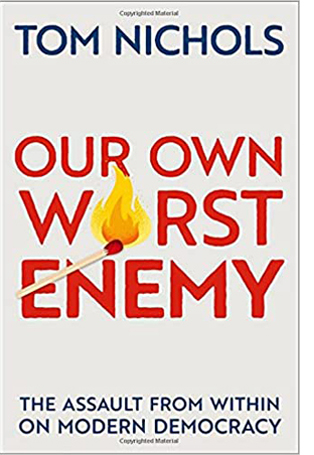 In interviews he sometimes says he means all of us. But that can’t be right. Thoughtful adults like Nichols, his readers, me, and probably you aren’t the people he criticizes. Nor are the “the most disadvantaged members of society.” They seldom vote, struggle from day to day, don’t show up at Trump rallies, and don’t own pleasure boats. In 2019 they counted as over 33 million people.
In interviews he sometimes says he means all of us. But that can’t be right. Thoughtful adults like Nichols, his readers, me, and probably you aren’t the people he criticizes. Nor are the “the most disadvantaged members of society.” They seldom vote, struggle from day to day, don’t show up at Trump rallies, and don’t own pleasure boats. In 2019 they counted as over 33 million people.
Evidently “we” are not the ultra rich, either—a class fraction to which Nichols makes little reference, despite their outsize role in shaping politics. The “we” of Nichols’ book is a they, a group he calls in an echo of Marx the lumpen-bourgeoisie.
Members of that fraction typified the mob that invaded the Capitol. A lot of the riot’s footage seems to feature classic good ol’ boys, but Nichols doesn’t see them as typical. Forty percent of those arrested, a University of Chicago study claims, were white-collar workers or business owners. Several of those indicted are current or former police officers or members of the military. Nichols invokes vivid instances: rioters chartering jets to Washington, potbellied men trying to swagger under expensive military gear, a realtor who used the insurrection as a marketing tool. So we have to wrap our heads around the prospect that people shopping for granite countertops keep Confederate flags in the guest room. Perhaps all may belong to the group that Nichols’ tweets identify as “Rube Nation.”
In any case, he concentrates on this segment of Trump support, the lower-to-upper middle-class householder enjoying a second home, nautical craft, Disney World vacations, and a truculent attitude. With this vivid prototype, he aims to show how “a sated middle class” became the lumpen-bougeoisie.
Its behavior springs not from material conditions of plutocracy or macro-policies, nor from the members’ social prejudices. Most studies show the strongest correlation with Trump support is not class or education but racial animus, an inference supported by the Chicago study, but Nichols’ book gives racial bias only a couple of pages of attention. He attributes the problem to deeper attitudes born of material plenty. He provides some statistical information, choice quotes from experts and pundits, personal anecdotes, and audiovisual aids drawn from pop culture.
 The l-b had so much affluence after the wild 1970s that they succumbed to bad habits. Their standard of living, vastly above that of other nations, pampered them into narcissism. Reviving Christopher Lasch’s 1979 diagnosis, Nichols says that “tempts us away from thinking about the needs of other people and to see them only as objects in relation to our own happiness.” As selfish as spoiled toddlers, and as pain-averse as Princess Buttercup in The Princess Bride, the l-b see that everything is available on demand, and yet they want more. They simply do whatever they can get away with. They are discourteous and entitled. Now people take off their shoes on plane flights, an outrage Nichols aired in 2019 and that provides a vivid example of what’s wrong with us/them.
The l-b had so much affluence after the wild 1970s that they succumbed to bad habits. Their standard of living, vastly above that of other nations, pampered them into narcissism. Reviving Christopher Lasch’s 1979 diagnosis, Nichols says that “tempts us away from thinking about the needs of other people and to see them only as objects in relation to our own happiness.” As selfish as spoiled toddlers, and as pain-averse as Princess Buttercup in The Princess Bride, the l-b see that everything is available on demand, and yet they want more. They simply do whatever they can get away with. They are discourteous and entitled. Now people take off their shoes on plane flights, an outrage Nichols aired in 2019 and that provides a vivid example of what’s wrong with us/them.
Now, though, the l-b’s self-centeredness has become a national threat. Americans have sunk into “perpetual adolescence.” To our overseas friends, this has been evident for a long time; the French call us les grands enfants, the big kids. For Nichols this infantilism is revealed partly through Americans’ fascination with show-business celebrities and empty political stars like Bill Clinton and, eventually, Donald Trump. The inevitable movie example is A Face in the Crowd.
When the l-b are thwarted in their self-indulgence, they get mad. For Nichols, anger joins narcissism as a symptom of the new sensibility. True, Nichols grants that we’re largely happy (especially “wealthy, married Republicans”) but narcissism has made us distrustful of others. Americans poll as angrier than their international counterparts, which again seems inane, given US wealth and power. Yet Democrats are unreasonably angry about Republicans, and Republicans about Democrats, thereby “escalating political differences to existential struggles.”
Anger shades off into a third syndrome of Nichols’ account: ressentiment. He defines this well-worn political concept as “an anti-democratic desire to see [others] torn down in the name of ‘equality.’” It’s that grudging envy, again stemming from overstuffed narcissism, that says you deserve what others have, and they don’t. While Nichols claims ressentiment afflicts the left, his examples lean rightward. Trevor from Tennessee would rather die than support Obamacare; the Tea Partyers favored retaining the safety net for themselves but resent “handouts” to “undeserving” citizens. Nichols even makes common cause with Thomas Frank, outstanding leftist historian, whose account of “Richistan” chronicles the persistent fury of prosperous people driven by the spectacle of others who have still more. The l-b got what they wanted, and seeing that others have more has made them miserable.
Nostalgia is the fourth failing Nichols picks out. The l-b yearn to return to the past. He invokes popular culture to show how people gauze over earlier times (Happy Days, That 70s Show). Yet the same culture gives expression to rage, as in All in the Family, “a constant argument . . . about who was to blame for everything being terrible.” Today’s l-b, declaring they want their country back, are ignoring the real problems of the present in favoring a return to…what? The malaise and oil shock of the 1970s? The Mad Men conformity of the 1960s (but what about all those social conflicts)? Nichols doesn’t get specific, largely confining himself to an interpretation of a Night Gallery episode. By the end of his summation he concludes that not just the l-b but “an entire population” entertains “comforting lies about the past.”
All these frailties are cranked up by the screech of the internet, a site of hyper-connectivity. The speed of online life swamps our ability to reflect on matters in a disciplined way. It exaggerates fear and yet encourages us to seek out the drama and danger of catastrophe. It allows people to share isolated anecdotes that can seem to add up to a trend. Nichols shrewdly points out that the illusory intimacy fostered by Facebook, Twitter, and other platforms has actually fostered conflict—Freud’s “narcissism of small differences.” Quarrels get clicks, so people are encouraged to fight.
Our online access to other lifestyles builds the l-b’s anger and ressentiment. Sunny vacation tweets and virtual house tours show them how people everywhere are richer and happier than we are. To the nationalization of minor local elections there corresponds a nationalization of social activity. Everyone knows about hip-hop, the Kardashians, Friends, and school-board disputes in Chillicothe. Instead of local subcultures, “there is now one culture, mediated through the internet and cable television, and we’re all living in it.”
Even if we were to slow our pace of consumption, the damage has been done. People are already more isolated, depressed, and angry. The architects of social media have trained us too well in self-regard and exhibitionism. Here “we” actually becomes we: Nichols “must admit to my own hypocrisy.” He knows that his career as media pundit, and the success of this book, owe a great deal to the virus of digital culture.
Decades of decadence
Every day we get evidence of Nichols’ case about the Trumpistas’ lunatic self-absorption. The Woodward/ Costa blockbuster, Peril, reports the chatter a Congressman overheard on a Stop the Steal flight out of DC.
America was so bad, so lost, one young man said, “I’m just going to move to South Korea.” . . .
“You should move to Idaho,” suggested one woman.
“I just don’t think they have decent seafood in Idaho,” the young man replied.
Still, one objection to Nichols’ social diagnosis pops up immediately. The liberal wing of the population has grown up with the same sense of entitlement as the l-b. The cosmopolitan upper-middle-class is in thrall to narcissism, ressentiment (status seeking, conspicuous consumption), social-media frenzy, and of course anger at the goobers.
But metrosexuals aren’t storming the Capitol armed with bear spray and plotting to kidnap governors, let alone shooting unarmed citizens. Although conservatives claim that the libs are closet Socialists, the evidence is scanty; Bill Gates is no Kerensky, possibly because half of everything is already his. What is the secret sauce that turns the lumpen-bourgeoisie into a raging army? Nichols doesn’t engage with the most obvious explanations: superstition (e.g., Evangelicalism), gun fetishism, racial prejudice, proud ignorance (Trump: “I love the poorly educated”), bad health, and, well, drugs.
Instead, Nichols paints a landscape of social behavior that I think we can call decadent. This has long been a conservative theme, as Corey Robin points out in The Reactionary Mind: Conservativism from Edmund Burke to Donald Trump. Burke and Joseph Maistre found the eighteenth-century nobility weakened by their self-absorption, while Edmond Sorel denounced the bourgeoisie as similarly unable to see how rising tides of revolution threatened their rule.
More recently, in the US, many conservatives saw the war on terror as shaking off Clintonian complacency and taking muscular steps to reestablish American dominance. Donald and Frederick Kagan, in While America Sleeps (2000) lamented the “lack of imagination” that keeps the American bourgeoisie locked in pleasurable security without the need to define itself “by virtue of whom we were up against.” From this perspective, war abroad and cultural strife at home would seem redemptive.
Ross Douthat sounds the theme in a book called, no kidding, The Decadent Society (2020). Adapting Jacques Barzun’s use of the term, Douthat finds that a decadent society enjoys a high level of prosperity and technological development but suffers from “economic stagnation, institutional decay, and intellectual exhaustion.” American life is so flat, hollow, and mired in repetition of ideas, cultural flotsam, and social rituals that no really new force can emerge. (For Douthat, that would partly entail a religious awakening.) Along with the creature comforts Nichols complains of, Douthat sees Americans as having lost faith in the expansionary impulse that opened the frontier and sent men to the moon. He apologizes for defending imperialism, but at least the conquest of other peoples provided “consolation” for Europeans’ waning religious faith.
Needless to say, film is involved. In several pages Douthat finds numbing cultural repetition most evident in Hollywood, which relies on earlier films and legacy intellectual properties. (When did it not?) And yes, Star Wars makes its inevitable appearance. Zeitgeists too. As usual, the 70s were better, when those daring nonconformist movies grappled with reality. I try to type this with a straight face.
Nichols makes no reference to Douthat or his book, but he might have acknowledged that his own worry about American torpor is a diagnosis that conservatives often have to hand. Nichols’ sense of decadence emphasizes loss of civic responsibility, while Douthat is more wide-ranging; but both see our problems as born of a population unable to shake off comfort and become engaged in moving history forward.
We often envision conservative thought as clinging to a status quo, but Robin points out that conservatives are literally reactionary. They define their program by reacting to any threats to social hierarchy, whether that is a revolutionary surge from below or simply a barren landscape of peace and plenty that leaves the populace apathetic and vulnerable to enemies, inside or out.
Hard to be a grown-up
William Gropper, caricature of Rep. Clare Hoffman (R-Michigan)(1942).
Nichols asks virtuous citizens to be “mature” and “adult” and “serious.” We deliberate questions, we trust experts, we avoid conspiracy theories and reckless accusations. Yet this raises the question of whether the political party he has supported for forty years measures up. You can go back to any point in Republican history, but just let me recall the 1940s version of America First and how members of that party responded to it. There are some striking anticipations of today’s rhetoric.
Hamilton Fish (R-New York) 1940: “We don’t want any alien philosophies in this country. This is a Christian American nation. . . America for the Americans—that should be the cry of the America First Committee.” When he referred to “international bankers” dragging the US into war, the crowd cried, “The Jews. The Jews.” Fish smiled approvingly.
Clare A. Hoffman (R-Michigan) 1940: “His [Roosevelt’s] threat to use the sovereignty of a Government is but the threat of a Hitler, a Mussolini, a Stalin to silence all opposition and criticism.”
George Bender (R-Ohio) 1940: “Our people hate everything Hitler stands for, we despise dictatorship in any form, but I challenge anyone to tell us the difference between the Executive Orders issued by Roosevelt and those issued by Hitler.”
Clare A. Hoffman (R-Michigan) 1942: “Perhaps nothing but a march on Washington will ever restore this Government to the people.”
These are the serious people Republicans elected to Congress in the good old days when we were just emerging from the Depression and had to fight a world war. Has the party changed?
According to Nichols, the scales fell from his eyes in 2016, when Trump won the nomination.
I spent nearly 40 years as a Republican, a relationship that began when I joined a revitalized GOP that saw itself not as a victim but as the vehicle for lifting America out of the wreckage of the 1970s, defeating the Soviet Union, and extending human freedom at home and abroad. I stayed during the turbulence of the Tea Party tomfoolery. I moved out briefly during the abusive 2012 primaries. But now I’m filing for divorce, and I am taking nothing with me when I go.
Yet Nichols’ former party has long failed to exhibit the virtues he exalts. During his adherence to the party, the notably unserious Dan Quayle and Sarah Palin were nominated to be a breath away from the presidency. Joe the (not) Plumber was a campaign gimmick. Bush’s Vulcans Cheney (“Reagan proved deficits don’t matter”), Rice, Rumsfeld, Armitage, and Wolfowitz lied the country into two wars, built a mercenary invasive force, and ignored the 9-11 terrorists’ ties to Saudi Arabia.
Nichols was there for the rise of Birtherism in the party, along with the sideshow of backwoods GOP time-servers circulating cartoons of the First Family as sharecroppers and cannibals. He apparently missed the capture of the Party, over George H. W. Bush’s objections (safely in retirement), by the National Rife Association starting in 1995. Nichols says he was “hating on” the Tea Party from the start, but it didn’t nudge him to break. Well before Trump’s nomination, Nichols witnessed Mitch McConnell’s refusal to set nominations for Merrick Garland, which could be a deal-breaker if you think mature adults play in good faith. Today’s canny reinforcement of public distrust was already on display in McConnell’s reply when asked if Obama was a Muslim: “I take him at his word.” On Twitter Nichols deplores our GOP equivocators who dance around questions of vaccination and the legitimacy of Biden’s election. But these hacks are reactivating dodges on display for decades. Dog whistles were never pitched all that high.
As a Boomer, I can match Nichols with a couple of personal anecdotes. In rural New York, I saw often enough the racism that emerges if just one or two Black families move into a community. Classroom: Teacher describes Brazil nuts as “n-gg-r toes.” Schoolyard: Kids surround the only Black student and shout the word at her.
Later, in those narcissistic days of the 70’s, I thought that people lining up for gas during the Oil Shock would later have sufficient memories to be prudent about energy. But when the shortage subsided, people went on to buy gas-guzzling vans and SUVs. A big chunk of the electorate was already pretty infantilized. Thirty years later, at the depths of the 2008 recession (blamed by Nichols on people’s imprudent longing for home ownership), a solid 24% approved Bush’s handling of the economy. The obtuse are a persistent voting bloc.
Nichols is fond of quoting JFK’s “Ask not what your country can do for you; ask what you can do for your country” as a clarion call for virtuous citizenship. Yet it was Ronald Reagan who turned that on its head in October 1980: “Are you better off than you were four years ago?” True, Reagan went on to worry about unemployment figures and national defense, but pitching the problems as concerning one’s personal comfort looks a lot like “tempting us away from thinking about the needs of other people and to see them only as objects in relation to our own happiness.”
Further, Reagan tapped into nostalgia (“a shining city on a hill”) and ressentiment (the “welfare queen,” the unworthy Black man buying steaks with “our” tax money). For the anger ingredient, he would subcontract that to wingmen like Oliver North. For years his team laughed off the AIDS epidemic. Apart from all that, Reagan didn’t offer us the option of deliberating, as thoughtful citizens, whether “we” should sell weaponry to Iran and divert the money to an undeclared war in Nicaragua.
More on-the-spot evidence emerges from the sorrowful memoir by Stuart Stevens, long-time successful GOP political consultant. It Was All a Lie: How the Republican Party Became Donald Trump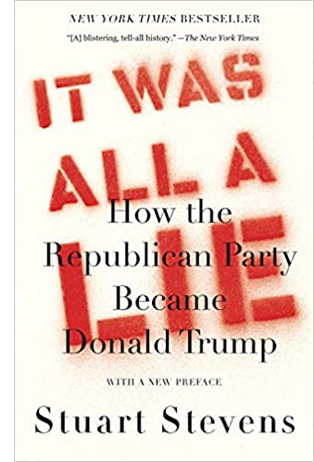 (2020) traces in detail how after World War II, and especially after the Civil Rights movement, the party became firmly allied with white supremacy. Unlike Nichols, Samuels puts race prejudice at the center of his argument, making it the very basis of the 1970s Republican resurgence. Well before the rise of Trump, the thought leaders of the right were not legislators but Rush Limbaugh and other talk-radio blowhards, along with Newt Gingrich. In his 2021 preface Stevens admits that even he didn’t anticipate Trump’s efforts to overturn the election, let alone the Stop the Steal rally.
(2020) traces in detail how after World War II, and especially after the Civil Rights movement, the party became firmly allied with white supremacy. Unlike Nichols, Samuels puts race prejudice at the center of his argument, making it the very basis of the 1970s Republican resurgence. Well before the rise of Trump, the thought leaders of the right were not legislators but Rush Limbaugh and other talk-radio blowhards, along with Newt Gingrich. In his 2021 preface Stevens admits that even he didn’t anticipate Trump’s efforts to overturn the election, let alone the Stop the Steal rally.
I could not conceive of the Republican Party becoming the greatest internal threat to democracy since the Civil War. But that is the reality of this moment.
He spares some thoughts for the millions who have bought into Trumpism, but I think that he sets the balance more justly than Nichols does. A long con allows us to blame the victims for their gullibility, especially if they continue to be milked for years. But ultimately we blame the grifter, not the chumps.
Of course many Democrats have been bigoted, corrupt, and mendacious. There were Dixiecrats and brutal Democratic political machines ruling cities. (One reason not to join either party and instead support select candidates.) But it’s fair to bring up GOP names, then and now, because Nichols relies on a personality-centered conception of mature human agency: temperament as projected publicly, as opposed to socially mediated action.
I was struck by a central anecdote. His father, a staunch Republican, declared that the country would be “just fine” whether Romney or Obama won in 2012. “They’re both good men.” Putting aside the charge that Nichols here indulges in nostalgia, is that really a mature, adult judgment?
Mitt Romney is a financial speculator, famed for asset-stripping distressed companies into bankruptcy and wiping out jobs. (He was attacked as such by none other than Gingrich.) He ran for office on a Republican platform that vowed to cut corporate tax rates, reduce Medicare, privatize Amtrak and other intercity rail systems, block union organizing, and initiate a Constitutional amendment to limit federal spending. The platform also maintained that states had the right to forbid same-sex marriages. Romney’s purported principles would not leave everyone “just fine.” And even though he once joined a George Floyd protest march, he’s given no sign of opposing the voter-suppression measures now under consideration in dozens of states.
There’s much to be said against Romney’s presidential rival Obama as well, but surely Nichols would declare that the crucial factor in judging either man’s candidacy is not whether you think well of the guy. He praises his dad for equanimity, but by his own standards, that isn’t enough for informed citizenship. Mature judgment requires understanding of substance, process, and context–and taking action.
A movie memory of mine matches 3 Days of the Condor. I grew up fed on the films and TV shows providing social commentary from a more or less Democratic angle. I was also tempted by stronger appeals; in high school I subscribed to the newspapers of the Socialist Workers’ Party and the Socialist Labor Party, as well as The New Republic. Later I would recognize Preminger’s Advise and Consent (1962) as the best movie about Washington politics (i.e., gridlock).
Rediscovering The Best Man (1964) lately, I think Cliff Robertson’s sound-bite speech to a Convention gaggle might have reinforced my teenage skepticism about the GOP. Robertson is a right-wing Democrat trying to wrest the nomination from Henry Fonda, an Adlai-Stevenson-style intellectual.
Despite his noble principles, Robertson is prepared to play very dirty. At this moment, he is threatening Fonda with circulating confidential documents about treatment for a mild breakdown. That is still the GOP strategy. The bafflegab about patriotism, limiting government, balancing the budget, and accepting “personal responsibility” is a fig leaf for the urge to install power where it belongs, among the rich, mostly white, mostly male elite.
But even if you’re not that skeptical, you have to admit that nearly sixty years ago Gore Vidal’s screenplay distills the essence of unchanging conservative values. With almost no changes Robertson’s speech could be delivered today by the “serious” party patricians. It was all a lie, Stevens says. Could Nichols issue a similar judgment? Or is the blame with us because we were lazy, ignorant, and dumb enough to believe the lie?
Well, not all of us were.
What happens between elections
Katie Porter questions Jamie Dimon, 10 April 2019 at a session of the House Financial Services Committee.
Just as he reduces human agency to displays of cultivated virtue, Nichols relies surprisingly often on a narrow basis for political activity. His “we” are almost completely characterized as voters. That’s where their power lies. A recent Twitter riposte has a suggestion.
For Our Own Worst Enemy, the primary role of citizenship, it seems, is that of casting a ballot. We are lazy consumers; we need to become informed, committed voters. (Nichols’ entire defense of his position on a Daily Beast podcast relied on voting statistics.) Constantly invoking “participation,” he doesn’t analyze what people might do between elections.
Nichols’ American “we” doesn’t include activists, street marchers, petitioners, whistleblowers, strikers, strategic investors, boycotters, donors to good causes, voter registration solicitors, or volunteers at food banks and homeless shelters and vaccination centers, let alone professional social workers, medical workers, researchers, teachers, public defenders, civil servants, and others trying to improve the lot of the world with a day job.
What about the media? Despite the faults of much reportage, the fall of Trump owed a good deal to a critical press. Academics have also played a role. Chomsky has long been the leader here, but he has many other counterparts. Without William Cronin’s research into ALEC, would we know about the way this shadowy group produces “model bills” that are virtually Xeroxed into legislation throughout the states? (Despite Republicans’ lip service to free speech, Cronin was hounded and smeared.)
Every day the Southern Poverty Law Center, Marc Elias’s Democracy Docket, Chef José Andrés’ World Central Kitchen, and other organizations exemplify the robust civic virtues that Nichols finds lacking in the l-b. Not all of us on are Facebook all the time; some do political work, and not just as campaign workers.
Some of us even run for office. If Nichols really values mature, precise inquiry, he might pick out some moments in Congressional hearings: Katie Porter poleaxing Jamie Dimon, Kamala Harris turning a butterball Attorney General to wriggling evasion, or AOC revealing Mark Zuckerberg’s mafioso-level amnesia. Adults do stuff like this all the time.
Such absences are fairly stunning when you consider what was happening outside when Nichols wrote his book. The Republicans’ recent aggressive assault on voting rights came too late to be included in his manuscript, I surmise, but that party’s voter suppression strategies go far back, notably in my state of Wisconsin. They don’t rate notice from Nichols—surprising for a Kremlinologist who might find an affinity with Putin’s “managed democracy.” Black Lives Matter is mentioned only as a pretext for the January Capitol invasion. Our Own Worst Enemy is silent on the atrocities around the shootings of Black people by white cops or the killings of demonstrators in Charlottesville and Kenosha.
Nichols seems to think that the policies we vote for every few years come principally from the professionals, and not from a constant struggle between demands for social change and the moneyed interests controlling elected officials, as mediated by gatekeepers and agenda-setters. As I reconstruct his view, ideally the two US parties hold distinct principles, which they debate reasonably. The principles get hammered into policies, also negotiated and argued over. (Perhaps in Mitt Romney’s “quiet rooms.”) Eventually voters get to decide at the ballot box which policies they prefer.
But of course this story ignores the constant pressures on politicians to enact specific policies benefiting corporations and the wealthy and then to justify them by some public rationale, from “personal freedom” to trickle-down economics. Legislators become lobbyists, corporate players join the executive branch, even the Cabinet. The wealthy’s priorities saturate political culture before, during, and after the moment of an election.
By contrast, Nichols doesn’t treat Occupy, MeToo, people pressing for gun control or clean air or water—all the striving citizens who aren’t at home watching Nascar–as significant participators in political culture. Yet through public protests and community organizing, many ideas like same-sex marriage and a guaranteed minimum income have become gradually thinkable for a broad public.
None of these activities figures in Nichols’ final chapter, on what “we” can do. It consists of “modest proposals,” a fair description, innocent of Swiftian irony. More ambitious solutions are dismissed through a strategy of comparison with other countries. Nichols claims that risky populist symptoms aren’t unique to America, because he finds the same illiberal tendencies in Europe and India. Therefore ameliorating US inequality won’t change things because “more equal” countries are seeing the same rise in protofascist movements. Education hasn’t worked either, and persuasion won’t: the Trumpists are “true believers” in Eric Hoffer’s sense, living on belief fixation. In tweets Nichols insists that talking to them is a waste of time.
To go cinephile again, his deep doubt about change is close to that of the professional jury consultant in Runaway Jury (2003). Gene Hackman tells his adversary Dustin Hoffman that people don’t care about gun violence, or much of anything.
Yet unlike the uncertainty at the end of Condor, in this movie things turn out well. A majority of the jury votes against the gun manufacturers—not thanks to John Cusack’s tricks in their deliberations, but through an appeal to reason and empathy. They voted, he reports, according to their hearts. In the Hollywood manner, the film strategically avoids showing us that process, but it holds out some hope that if appealed to, ordinary people can behave with prudence and decency. And our protagonists, Cusack and Rachel Weisz, will turn the payments they extorted from Hackman toward rebuilding a town devastated by a school massacre. This is the Hollywood that conservatives despise. Right-wing fantasies of violence inspire nifty slogans; left-wing fantasies of social justice are brainwashing.
Virtue, and virtue signaling
Women’s March on Washington, 21 January 2017. (Chang W. Lee, New York Times).
Because Nichols plays down the people’s ability to do the right thing outside of clear-cut policy debates, his proposals are oriented toward top-down edicts. He would like to see political parties become stronger bulwarks against demagogues. He’d like to see a “summer of service,” a stint of military training yielding a common experience for all citizens, to replace the “Spartan” volunteer/ mercenary system we have. He’d advocate changes in the Constitution that could expand the House of Representatives or the number of states (but not any eliminating the Electoral College, which would revert to “pure majoritarianism”). Ultimately, through voting we are to reform the political class to reflect a more virtuous, “adult” electorate—which “we” should strive to become.
I’m less narrow in my hopes, and Nichols himself exemplifies why. He has argued that education and persuasion haven’t proven effective in convincing the l-b that their views are deeply mistaken. Maybe nothing reaches this group, but for whatever reasons, American young people may now lean somewhat more liberal than before Trump. Even former Republicans like Nichols (and the Lincoln Project et al.) have been shocked by how their party fostered the rise of right-wing authoritarianism and now embraces fascism and coup-plotting. Women’s pushback against Trump turned GOP adherent Jennifer Rubin into something like a feminist.
Let’s also not forget that, for young Nichols and me and many others, the soft power of the media has long delivered contentious, even mildly critical ideas with an emotional punch that policy debates don’t. That seems to be what provoked twentysomething Nichols in 3 Days of the Condor.
Perhaps events on the ground have made Nichols less conservative? Not completely. He castigates the Democrats as “torn between totalitarian instincts on one side and complete political malpractice on the other,” along the way declaring that liberals believe that “human nature is malleable clay to be reshaped by wise government policy.” Now that’s a book-length argument that I’d like to read, if Nichols addressed expert evolutionary and cultural evidence about human nature.
Still, he thinks abortion should be legal, that the military budget is too big, and that elites “either by design or incompetence, have enriched themselves at the expense of ordinary citizens.” He deplores class disparities, finds the Founders imperfect humans, acknowledges racism among the rural poor (thanks to a scene from Mississippi Burning), declares that racial and gender-based bigotry is unjustifiable, claims that health care is a human right, asserts that the rich should pay more taxes, and announces that popular media sand off the threatening edges of rap and hip-hop to satisfy “the dominant white demographic.”
In his tweets, columns, and Our Own Worst Enemy these comments are mostly offhand and usually followed by a caveat of one sort or another. He offers no example of how elitists could “incompetently” enrich themselves (maybe in an Adam Sandler movie?), and he casually notes there always will be people who cannot make ends meet (the poor are always with us, just never are us). But when in a rare aside he concedes that “the delayed promises of equality to women and minorities. . . will call justifiably enraged citizens into the streets to demand actions from recalcitrant authorities who have been in power too comfortably and too long,” I had to think back to our experience of the Women’s March on Washington. The timing was just right—the day after the inauguration, an immediate thrust in the face of the looming threat. Voters weren’t ready to wait till the next election to confront a career criminal who was, to everyone who had eyes to see, a catastrophic threat to our common good.
You can’t just blame angry, sybaritic voters. The lumpen-bourgeoisie have long been there, ripe for capture. The blame lies centrally with the Republican Party. It more or less accidentally discovered in Donald Trump the figure whose madness could merge the alt-right fringes with the mainstream party elites, and thus provide a juggernaut for seizing power and holding it in perpetuity.
One powerful counterweight to Nichols’ book is Adam Serwer’s The Cruelty Is the Point: The Past, Present, and Future of Trump’s America, a book whose historical and analytical acumen fulfill all Nichols’ demands for mature, nuanced judgment. Same goes for Serwer’s recent outline of the now-exposed Eastman memo. A little more gonzo, but well-documented, is the survey of earlier GOP voter suppression in Greg Palast and Ted Rall’s How Trump Stole 2020: The Hunt for America’s Vanished Voters (Seven Stories Press, 2020). Just as important, Thomas Frank’s The People, No: A Brief History of Anti-Populism (Holt, 2020) saw where Nichols was going in The Death of Expertise:
What has happened, the thinkers of the Beltway and the C-Suite tell us, is that the common folk have declared independence from experts and along the way from reality itself. . . [Nichols] equated populism with “the celebration of ignorance.”
The Republican comments from the 1940s come from the collection of Congressional speeches in Rex Stout’s The Illustrious Dunderheads (Knopf, 1942). As you see, Gore Vidal, one of America’s best essayists, disclosed many of these pervasive forces in the hallowed 1970s. My excerpts come from his provocative collection, United States: Essays 1952-1992. Robert Hughes’ The Culture of Complaint: The Fraying of America (Knopf, 1993) also anticipated some of Nichols’ arguments, although he emphasizes “Political Correctness” in the intelligentsia more than “Patriotic Correctness” among the malcontents.
Nicholas Grossman admirably lays bare Ross Douthat’s sophistries here. I’ll just add that most recently, Douthat argues that we ought not to get too excited by the current rate of 1 in 500 US Covid deaths because it could have been much worse–say, 1 in 50–and then people would have taken notice. “If the fatality figures were one-tenth as high, I suspect there would be much more internal liberal debate over the wisdom of the sweeping early response. And if they were 10 times higher, I think there might have been more red-state support for public-health restrictions of all kinds.”
This from the pundit who confidently predicted that Hillary Clinton would win the Electoral College with 322 votes. Four years later, under the title “There Will Be No Trump Coup,” he declared that if Trump lost he would “not attempt some wild resistance.”
Meanwhile, the scenarios that have been spun out in reputable publications — where Trump induces Republican state legislatures to overrule the clear outcome in their states or militia violence intimidates the Supreme Court into vacating a Biden victory — bear no relationship to the Trump presidency we’ve actually experienced.
Again, who is we? And why does this man still have a job?
For what it’s worth, my suggestion three years ago that the Trump regime constituted a slow-moving fascist coup has become more plausible to many. (Surprisingly, as I finish this entry, none other than Robert Kagan.) Other entries on this site include praise for Omarosa’s insights in Unhinged; guarded acceptance of the comradeship of the Lincoln Project; the cinematic dimensions of the second impeachment trial; the currency of a classic documentary; and the political use of associational form in Demi Lovato’s rendition of “Commander in Chief.” On Romney and Obama as storytellers, see here.
Dietrich before von Sternberg and von Sternberg before Dietrich
Thunderbolt (1929)
Kristin here–
In my entry on the ten best films of 1929, I suggested that that particular year, hovering as it did between silents and talkies, was relatively poorly represented on home video. Now Kino Lorber has released two films from that year that both entertain us and contribute to our knowledge of the late 1920s cinema.
In that entry I lamented the fact that Josef von Sternberg’s marvelous early talkie Thunderbolt had not had a proper DVD or Blu-ray released. I expressed hope that one of the home-video companies specializing in historically important classics would finally make it available. The Kino Lorber release finally allows historians and cinephiles access to this little-known masterpiece.
If Thunderbolt was a legendary film that called out for such a release, the 2012 Friedrich Wilhelm Murnau Stiftung restoration of Kurt Bernhardt’s The Woman One Longs for reveals this previously forgotten film to be, if not a masterpiece, a very good film. It’s also completely typical of a trend of the late 1920s that I have termed the International Style.
Coincidentally, von Sternberg and Dietrich, so closely connected in our minds, link the two releases. Thunderbolt was the director’s last film before beginning his series with Dietrich, and The Woman One Longs for was Dietrich’s last (and first) starring roll before she worked with von Sternberg for the first time.
I’ll deal with it first, since I don’t want it to be overshadowed by Thunderbolt.
The Woman One Longs for
The standard story has Marlene Dietrich claiming that The Blue Angel was her first film. Seemingly she wanted to suggest that von Sternberg’s use of her in a series of star vehicles created her career. The image above, of her staring through a frosty train window, might easily be mistaken for a von Sternberg shot. In fact it’s from her previous film, The Woman One Longs for (Die Frau, das der man sich sehnt, aka The Three Lovers), directed by Bernhardt.
The Jewish director barely made his escape from the Nazis, working during the 1930s in France and then shifting to Hollywood. There, under the name Curtis Bernhardt, he made many films up to the 1960s, perhaps most notably the Joan Crawford psychological drama Possessed (1947) and the Rita Hayworth vehicle Miss Sadie Thompson (1953). That was an adaptation of Somerset Maugham’s “Miss Thompson” (previously filmed by Raoul Walsh as Sadie Thompson, starring Gloria Swanson, in 1927 and by Lewis Milestone as Rain [a new title that had replaced the original name of the short story], starring Joan Crawford).
The plot of The Woman One Longs for is straightforward melodrama. The protagonist, Leblanc, is expected to rescue his family’s factory, tottering on the brink of bankruptcy, by marrying a wealthy heiress who loves him but who leaves him cold. He marries her, but on their honeymoon trip aboard a train to the south of France, he suddenly becomes fascinated by a mysterious beauty, played by Dietrich. She seemed to be under the sadistic control of Dr. Karoff. The latter is played by the great actor of the Expressionist theater, Fritz Kortner, familiar to most modern spectators as Dr. Schön, who keeps Lulu as his mistress in Pandora’s Box (also 1929). Leblanc becomes obsessed with saving Dietrich from her captor.
The plot is entertaining enough, but the real interest in the film, at least for David and me, is Bernhardt’s direction. It’s quite skillful, even flashy. Moreover, Bernhardt had clearly been seeing many of the major films of the 1920s from Germany, the USSR, and France. Like many other directors of the late 1920s, he blends them seamlessly into what I have called the “International Style.” (See Chapter 8 of Film History: An Introduction.)
The film starts in a setting done in a style familiar from many German films of the era, with a camera following a character through an atmospheric, faintly Expressionist street clearly built in a studio (below left). Even after the Expressionist movement ended in early 1927 with Metropolis, German films continued to use settings influenced by the style to represent old buildings or poor neighborhoods. Compare the opening shot of The Blue Angel (below right), the only Expressionistic setting in the whole film.
But Bernhardt has seen Soviet films as well. The early montage establishing the Leblance family’s factory uses the quick cutting, dramatic angles, and dissolves that such scenes have in so many Soviet and European films of the era (below left). A fight scene between Leblanc and Karoff uses fast editing, canted compositions, and camera reframing (below right).
Bernhardt has almost certainly seen L’Herbier’s L’Argent of 1928, with its streamlined sets (left) and low-angle framings shot with wide-angle lenses (right). Compare the latter with the low-camera-height shot of the Paris Bourse at the top of the L’Argent section in the 1928 entry linked immediately above.)
Bernhardt had also clearly seen Underworld, for the New Year’s party that forms the climactic scene of his film imitates von Sternberg’s party scene fairly obviously. The action centers around the two main male characters’ struggle over the heroine, with two count-downs raising the suspense: the beauty contest in Underworld and the approaching midnight signalling the new year in The Woman One Longs for. The hanging streamers that increasingly dominate the setting are, however, the giveaway for von Sternberg’s influence on Bernhardt (see bottom).
Speaking of influence, there is a moment in the party scene when the drunken Kaross pops a startled child’s balloon with a cigarette. Maybe this is a common trope in films, but the only other example I can think of is Bruno’s similar gesture of casual cruelty in Strangers on a Train.
The Woman One Longs for also contains a reference that we might today call an “Easter egg.” At the end, Karoff is arrested in the luxury hotel where the three main characters have been staying and where the New Year’s party take place. The manager insists that in order to avoid a scandal, the police must escort him out of the building via the “Hintertreppe” (backstairs). One of Kortner’s major roles had been the devious, obsessed postman in Leopold Jessner’s Hintertreppe (1921), one of the few other classics by which Kortner is known today.
Thunderbolt
I have already sung the praises of von Sternberg’s pre-Dietrich films on this blog. I find his naturalistic first feature, The Salvation Hunters (1925) heavy-handed, but with Underworld (1927) he abruptly hit his stride. To me it and The Docks of New York (1928) are his masterworks–those and Shanghai Express (1932), arguably the best of his Hollywood Dietrich films. The Last Command (1928) is excellent but not up to that level. I discussed these three when The Criterion Collection released them as a set in 2010. That set went out of print but is fortunately now available in Blu-ray. I put Underworld in my ten-best list for 1927 and The Docks of New York in the 1928 list. As I mentioned at the outset, Thunderbolt made the 1929 list.
There I briefly discussed the remarkable compositions and use of offscreen sound in the lengthy prison scenes of the title character on Death Row. Watching the new Blu-ray in preparing this entry, I was struck even more by the early scene in the Black Cat, a Black-run nightclub where we are introduced to Thunderbolt and his relationship to Ritzie, the heroine. As in the silents, von Sternberg’s habit of staging compositions with obstructing objects in the foreground is apparent. Note the entrance of Thunderbolt and Ritzie with a set element both framing and obstructing them (see top). Later a scene as two patrons of the club gossip about Thunderbolt partially blocks the faces, particularly of the one on the left.
The whole scene is marvelously enhanced, as I said in my 1929 entry, by the inclusion of Theresa Harris’ complete rendition of “Daddy, Won’t You Please Come Home.” It’s hard to think of another mainstream Hollywood film in which a Black cultural situation is used so naturally and with so much respect.
The Black Cat sequence ends with a police raid on the club. The cinematography at this point is pure film noir. (See image at the top of this section.)
As I said in the earlier entry, the one flaw in the film is the tepid central couple played by Richard Arlen and Fay Wray. Given the excellence of the Black Cat sequence and the lengthy prison scenes, that flaw is minor indeed.
The Woman One Longs for (1929)
A tantalizingly anonymous Josef von Sternberg film
Children of Divorce (1927)
Kristin here:
In 2008, David and I attended Il Cinema Ritrovato for the sixth time. The Hollywood director being featured that year was Josef von Sternberg. We saw some of the gorgeous prints on show, most notably (for me), a chance to re-watch the underrated Thunderbolt (1929), his first sound feature. To us the big auteur of the year, however, was Lev Kuleshov. Astonishingly, we only blogged from the festival once that year. It was a busy summer.
We and a great many other festival-goers lined up to see one of the rarer items on the program: Children of Divorce, credited to Frank Lloyd but with reportedly about half the footage re-shot anonymously by von Sternberg. We and a considerable number of those festival-goers did not get into the auditorium. For some reason this rare, legendary film was shown in the smallest venue, the Mastroianni, which was packed, with the two side aisles full of standees. (See the bottom image of our blog from the festival, as we caught a glimpse of those lucky enough to get in before retreating to find something else to watch or perhaps to wander around the always enticing Film Book Fair.)
Eight years later, in 2016, Flicker Alley released a Blu-ray/DVD combo of the Library of Congress’ 4K restoration of Children of Divorce. That two-disc set is out of print, but last month a MOD (manufacture-on-demand) version was made available. It is a single disc, Blu-ray only, and its main supplement is a pretty good one-hour documentary on Clara Bow produced in 1999 for TCM. (The original booklet is not included.) Somehow we missed the original release, but now I have a chance to catch up with this elusive film.
Naturally I wanted to find out if any information on which scenes of the film von Sternberg re-shot were available, I looked at various internet sources, including books in our library the reviews of the original 2016 Flicker Alley release and books. I found nothing on the subject, not even from film buffs speculating on the basis of style which scenes were his. I suppose one reason why so little discussion of von Sternberg’s contribution is that for many viewers and purchasers of the Flicker Alley discs, this a Clara Bow and Gary Cooper film. Those online reviews from 2016 focus on them rather than on the two very different directors of Children of Divorce. The third star, Esther Ralston is excellent as Jean, and in 1929 she would go on to play the title character in The Case of Lena Smith, Sternberg’s last silent film, which survives only in a fragment. Still, she doesn’t have the lingering reputation and devoted following that her co-stars still enjoy.
Spoilers ahead, including a revelation of the ending.
Von Sternberg’s account
In trying to discover von Sternberg’s contribution, we seem to be entirely dependent on von Sternberg’s sketchy recollections of his work on the film in his memoir, Fun in a Chinese Laundry (1965). Needless to say, one cannot take his account as the unvarnished truth, but it may contain some elements of that commodity.
According to von Sternberg, B. P. Schulberg, head of Paramount, asked him to watch a film that the studio considered unreleasable. Could von Sternberg could improve it by adding the sort of clever intertitles that he was then known for?
I looked at the film as he requested. Its title was Children of Divorce, and it had been made by a prominent director, Frank Lloyd, normally an effective director of commercial films. This one was a sad affair, containing theatricals by Gary Cooper and Clara Bow, the “It” girl of her day. I reported back to the executive who had backed this venture with a million dollars, and told him that no skill of mine could restore life to the film by injecting text into the mouths of the players. I suggested that half the film be remade.
That Lloyd should fall down so badly seems odd, given that he had been cranking out films at a rapid pace since 1915. These included films that would be considered star vehicles and adaptations of popular literature, such as the first version of The Sea Hawk in 1924. He would soon go on to win two early best-director Oscars, one for the Greta Garbo vehicle The Divine Woman (1928) and one for Cavalcade (1933), as well as being nominated for what is probably his best-known film, Mutiny on the Bounty (1935)–which won Best Picture despite not winning any other of its seven other nominated categories. Cavalcade often shows up on lists of the worst films ever to won the highest prize, but nevertheless, it seems odd that a director so respected within the industry that he won an Oscar for a film made the year following Children of Divorce‘s release should fall down so badly in creating the latter. We shall probably never know what cause this strange failure.
I must admit to never having seen a Frank Lloyd film, but von Sternberg’s assessment of him as an “effective director” seems lukewarm. It suggests that although Lloyd was a good, solid Hollywood practitioner, he had created an unwonted lemon.
In assessing the verity of von Sternberg’s account, we should pause over von Sternberg’s claim that Children of Divorce had had a million-dollar budget. That was well above the average cost of a film in those days. (Von Stroheim’s Foolish Wives, with its giant Monte-Carlo set, had gone over budget to become the first million-dollar film in 1922, and Universal head Carl Laemmle made the best of the situation by blazoning the extravagant budget in publicity for the film.) The original costs estimate sheet on Flicker Alley’s site, along with other documents from the film’s production, puts the total budget at $334,000–pre-re-shoots–a far more plausible sum. Possibly, writing in the wake of the scandal over the cost overruns leading to an estimated $44 million budge for Cleopatra (1963), he had to boost the paltry-sounding budget of a late-1920s feature at least to seven figures to show that he was doing an important favor for Schulberg.
In response to von Sternberg’s suggestion that half the film be remade, Schulberg (according to von Sternberg) said that he could not allot another five weeks to making changes in a project that still might flop. Von Sternberg writes, “I carelessly replied that I could remake half the film in three days and turn over a successful version to him.”
Schulberg asked, “What can I do about the sets? They’ve been torn down and the stages are full.”
Again according to von Sternberg, “I told him to have a tent erected for use as a stage and to dig out the sets from storage, and not to bother about anything else.” Schulberg agreed.
Von Sternberg’s entire account of the process of re-shooting the scenes runs as follows:
The tent went up and the transfusion began. A rainstorm came and lasted three days and three nights. We waded through the new scenes, now and then dodging a heavy burst of water that penetrated the canvas overhead. The crew that helped me and the poor actors that I mercilessly put through their new paces had to take a prolonged rest cure when I had finished with them. To match the scenes I wished to retain I had to use the style of the replaced director. The assignment was completed on time and, after removing the old scenes and replacing them with the new material, I showed the film to the flabbergasted executives.
This tells us discouragingly little. The weather and the cast’s exhaustion make for a dramatic tale but tell us nothing about the film itself. The only statement of interest is “To match the scenes I wished to retain I had to use the style of the replaced director.” Von Sternberg certainly knew the well-established norms of Hollywood filmmaking and if he deliberately set to blend his work into an existing film, his style could be difficult to detect. After all, we don’t know exactly what was wrong with the original version. Bad performances? Von Sternberg’s reference to “theatricals by Gary Cooper and Clara Bow” suggests that this may have been the case. Bad storytelling? Von Sternberg doesn’t mention whether he re-wrote any of the scenes he revised.
The new version premiered on April 2, 1927. Von Sternberg was not paid for his labors (he says), but he did prove himself as a director. Schulberg allowed him to direct an entire feature himself. Later that year, on August 20, his first silent masterpiece, Underworld, came out. This item in Variety of March, 1927, seems to confirm the basic claim of von Sternberg’s account. Several trade papers mentioned that Sternberg had re-shot some scenes, but none specifies which ones.
Briefly, Children of Divorce concerns two girls whose recently divorced parents have dumped them in a convenient French convent to be cared for. The parents return to the free life of single people, visiting their daughters infrequently. Kitty, a frightened, lonely girl, befriends the kindly Jean. Kitty introduces Jean to Teddy, an old neighbor of Kitty’s. Teddy and Jean hit it off and promise to marry as adults.
Kitty grows up and becomes Clara Bow. She is poor and must give up her love for the noble but impoverished Prince Ludovico (Einar Hansen) to pursue Teddy, now grown up to be Gary Cooper and very rich. His meeting with the grown-up Jean (Esther Ralston), herself now described as the richest woman in the USA, rekindles their love. Despite knowing this, Kitty uses the occasion of a drunken party to trick Teddy into marrying her, and they have a daughter.
Teddy wants to divorce Kitty and marry Jean, but insists that the daughter must not be as they were, a child of divorce. Kitty thinks this would free her to marry Ludo, but he informs her that his religion would not permit him to marry a divorced woman. She determines to hold onto Teddy. Jean decides to marry Ludo, thus quashing Teddy’s hopes of marrying her. Pure misery abounds–all the result, one way or another, of divorce.
What did von Sternberg do?
Naturally one would wish to know which scenes are Lloyd’s and which Sternberg’s. In her brief program notes for the film in the Bologna catalogue, Janet Bergstrom confidently comments, “You can’t miss the shadow language of his scenes.” Perhaps not, but there are actually very few Sternbergian shadowy shots in the film, and those are often brief touches. Here are the main examples. The second scene of the film shows the young Kitty (later to grow into Clara Bow) during her first night in the French convent where her newly divorced mother has dumped her (bottom). In another such atmospheric shot, Teddy reads Jean’s letter refusing to marry him if he divorces Kitty (top).
Other such shots occur occasionally. When Teddy and Kitty’s daughter totters winsomely down the stairs during a party, the elaborate railing casts a shadow over her. Jean’s first sight of her fixes her determination that for the sake of the child she will not agree to marry Teddy if he divorces Kitty.
These are the only shots that one could argue contained strongly Sternbergian shadows. The opening scene in the convent as Kitty’s mother leaves her has a shadow of an offscreen window on the wall at the center of the shot, but surely one could not be certain that an image directed by Lloyd could not have such a modest shadow simply to create the atmosphere of the setting.
Indeed, it seems like a typical shot from an A picture of the mid-1920s.
I do not think that one can determine which shots and scenes were redone by von Sternberg just by the lighting. “To match the scenes I wished to retain,” von Sternberg must have used the three-point lighting system that had been established as the norm during the second half of the 1910s. He did a very good job, and there are many scenes that look like they could have been shot by Lloyd or Sternberg, adhering to that same norm and of course using the same sets and costumes. Which of the two directors made this image, with its exemplary use of the three-point lighting system devised by Hollywood practitioners in the second half of the 1910s?
Von Sternberg’s reference to Lloyd as an “effective” director may sound like diplomatic, lukewarm praise, but he might have meant that any good Hollywood director with an experienced cinematographer could have produced such an image, with its perfect blend of key, fill, and back lighting.
Similarly, we might be tempted to identify this glamor shot of Ralston as directed by von Sternberg, but it seems a fairly conventional approach to filming a beautiful star in the late 1920s.
And here’s an impressive depth staging in the scene where Luco tells Kitty that he could never marry a divorced woman for religious reasons.
It is tempting to think that the stark juxtaposition of a sharply in-focus foreground cut off from the soft-focus background by the edge-lit fringes on the curtains is a von Sternbergian touch, but we cannot be certain that Lloyd and a good cinematographer could not create the same effect.
A possible, probable von Sternberg scene
The big climactic scene sure looks like a very skillful director made it. One is tempted to say that that director was von Sternberg.
The action brings to a head Kitty’s machinations. Having been rejected by Luco, she realizes that her refusal to let Teddy and Jean be together is making them miserable and is not the best thing for her daughter, either. She writes a suicide note addressed to Jean, hugs her daughter for the last time, and heads into her bedroom clutching a bottle of poison.
Here is a breakdown of the scene. It begins with Kitty reading a newspaper. We see her point-of-view, revealing that Luco is going to marry Jean. Luco has already rejected her, but this scene is the moment when she learns that he is to marry her friend. The newspaper shot is followed by a closer view of Kitty.
She looks up and to her right, her face grim. It is notable that Bow has been de-glamorized for this scene, with her eyebrows minimized and her hair swept back from her face in a matronly style quite different from her usual bouncy curls. The camera pulls in toward her until it is in extreme close-up.
The pull-in reveals a tear that has slid down from her right eye. It is worth pointing out that this is Clara Bow, noted for her flapper image, always lively and carefree. Clearly she could play drama and even melodrama. Perhaps this is an instance of von Sternberg’s famous ability to direct female performances.
The intense close view is interrupted by a cut to Kitty dropping the newspaper. A long shot follows as she stands and moves to sit down at the desk. A cut-in to a medium shot shows her thinking and beginning to write.
This leads to her point-of-view on what she writes. We learn only that it is a letter to Jean and that Kitty has had a realization. A return to the medium-shot framing shows her reacting to a knock at the offscreen door and saying, “Come in” as she hides the letter under the desk-blotter. An eyeline-match cut shows her daughter entering. A pan follows as she crosses to the desk and Kitty kneels to embrace her.
A cut-in shows Kitty emotionally embracing the girl. During the course of this, the girl’s hat falls off. In a return to the medium-long shot, Kitty carries the girl to her nurse. Another shot shows her returning to fetch the fallen hat and hugging it while displaying despair.
A more distant framing shows her putting the hat back on the child. The nurse’s cheery expression as she helps put the hat on contrasts greatly with Kitty’s unnoticed emotion. Once the others leave, Kitty returns to sit at the desk and pulls out the unfinished letter. Again we see her point-of-view as she completes the letter and we realize that it is an apology and suicide note, telling Jean to marry Teddy and raise the daughter that should have been hers. A return to the medium shot shows her putting the letter into an envelope.
A rather clumsy and unnecessary cut-in to a tighter shot of Kitty might suggest a blend of Lloyd and von Sternberg footage is occurring, but the lighting on the set, Kitty’s hair-do and costume are identical, so the footage is probably all from the same director. A return to the previous medium shot shows Kitty hesitating as she finishes addressing the envelope and presses a button to summon a servant. A cut back to a more distant shot shows her rising and starting rightward toward the door.
A cut to the doorway shows Kitty handing the envelope to a maid, who leaves. Kitty than moves away from the camera to reach for a small cabinet on a table. A cut-in with match-on-action shows her unlocking the cabinet and taking out an object barely recognizable as a small bottle.
A cut to the mirror above the cabinet shows Kitty looking at herself, with the image of her face going out of focus. A cut to a medium-long shot leads to the camera panning with Kitty as she moves to a door at the rear.
She opens the door and walks into the distance as the camera tracks slowly back.
That’s a pretty flashy scene, and it certainly seems more likely than not that von Sternberg directed it.
Once again Flicker Alley deserves credit for bringing us another important film from the silent era.
Thanks to our friends at Flicker Alley for facilitating this entry.














